Nombre:
Castillo de Kreuzenstein
Otro: Burg Kreuzenstein
Localización:
Tipo: Militares
Categoría:
Foto:
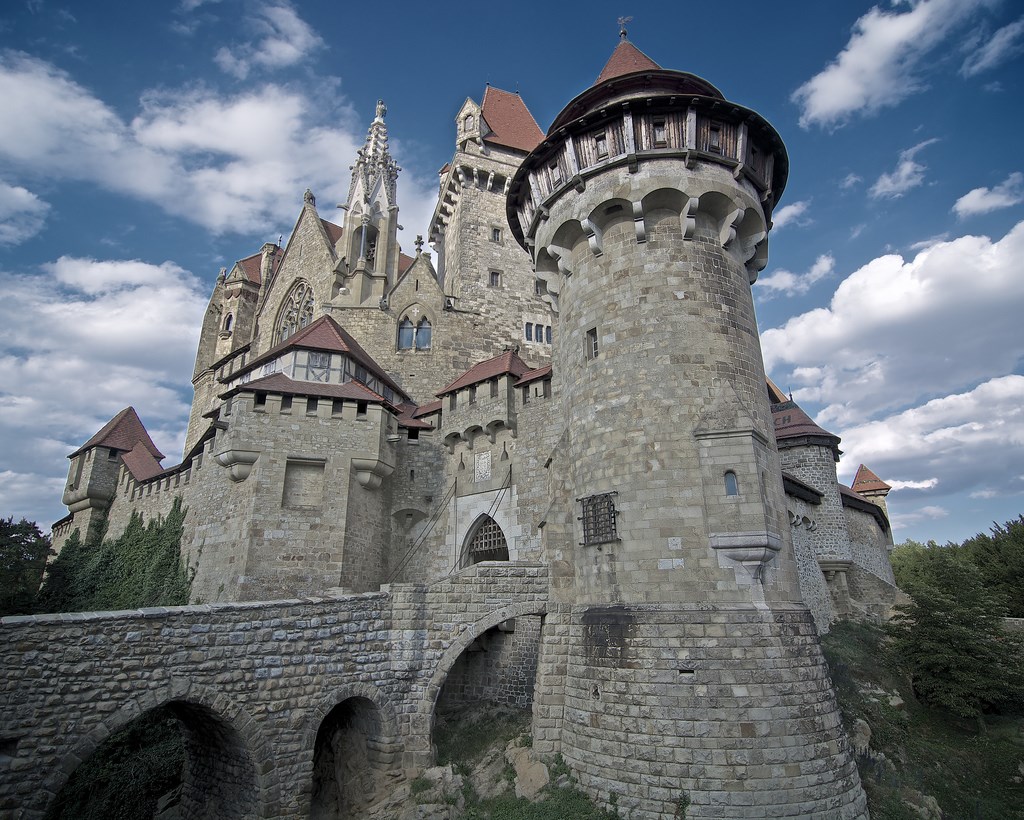
Voto:
Continente: Europa
País: Austria
Localización: Leobendorf
Año: s. XI / XIX
Estado: Terminado
Descripción:After our tour of Klosterneuburg we traveled about an hour to Kreuzenstein, a medieval castle. It was probably one of the coolest castles I’ve seen and the kind of castle everyone pictures when they think of knights, the Middle Ages, and princesses.
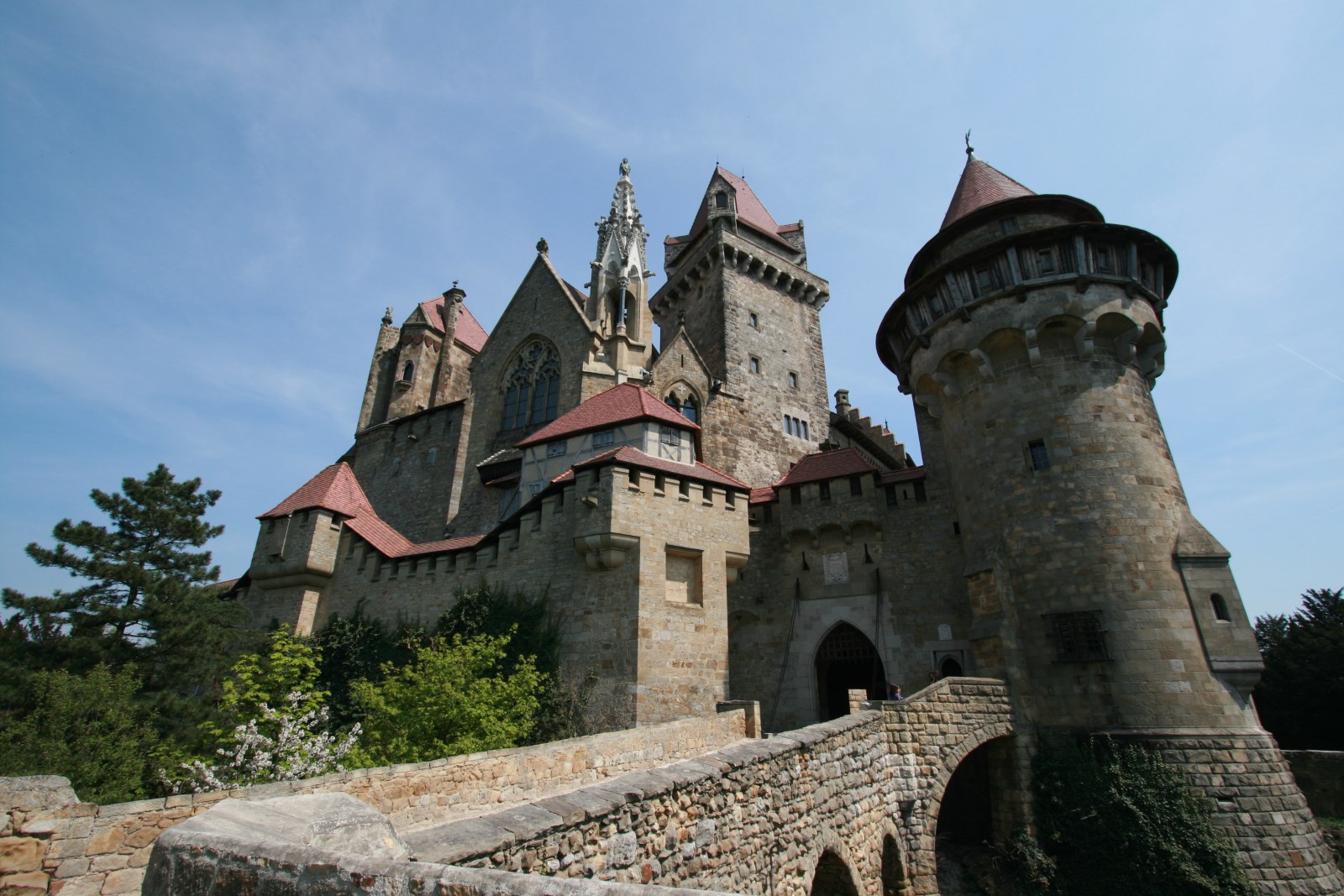
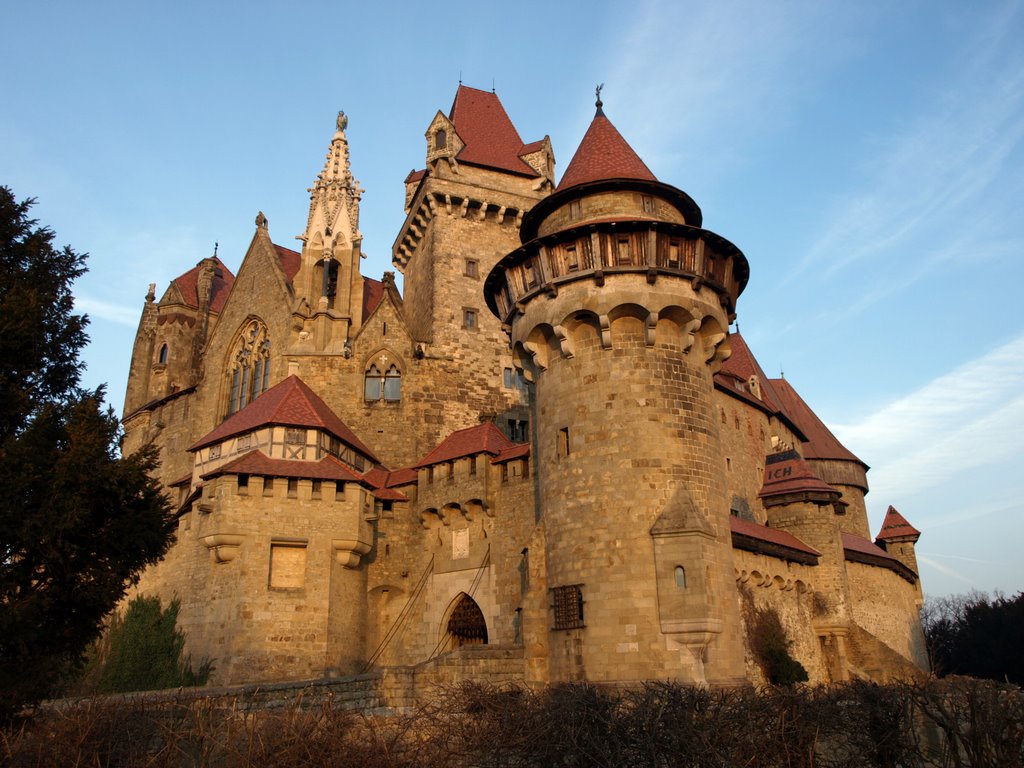
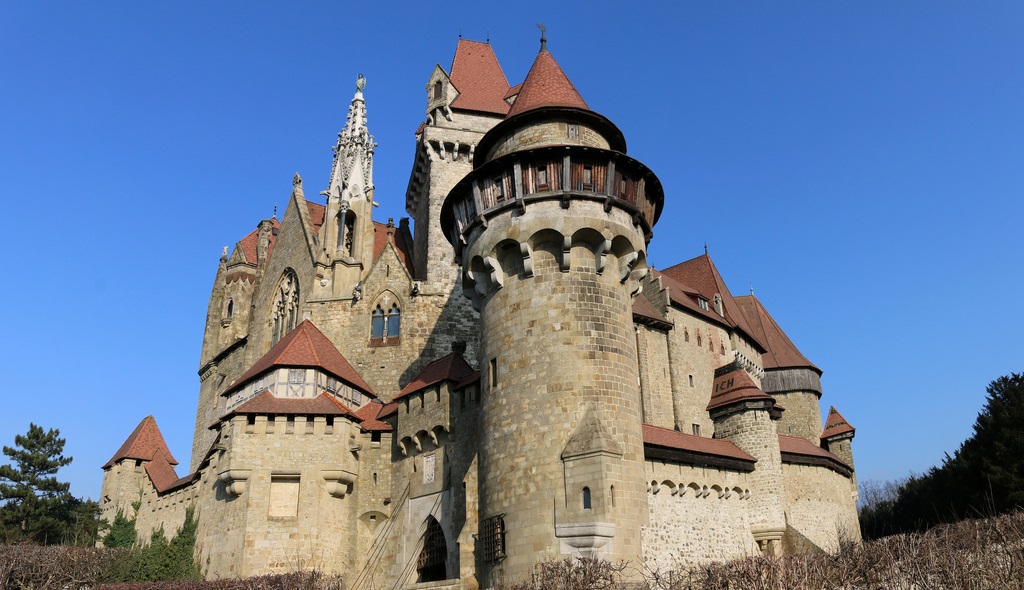
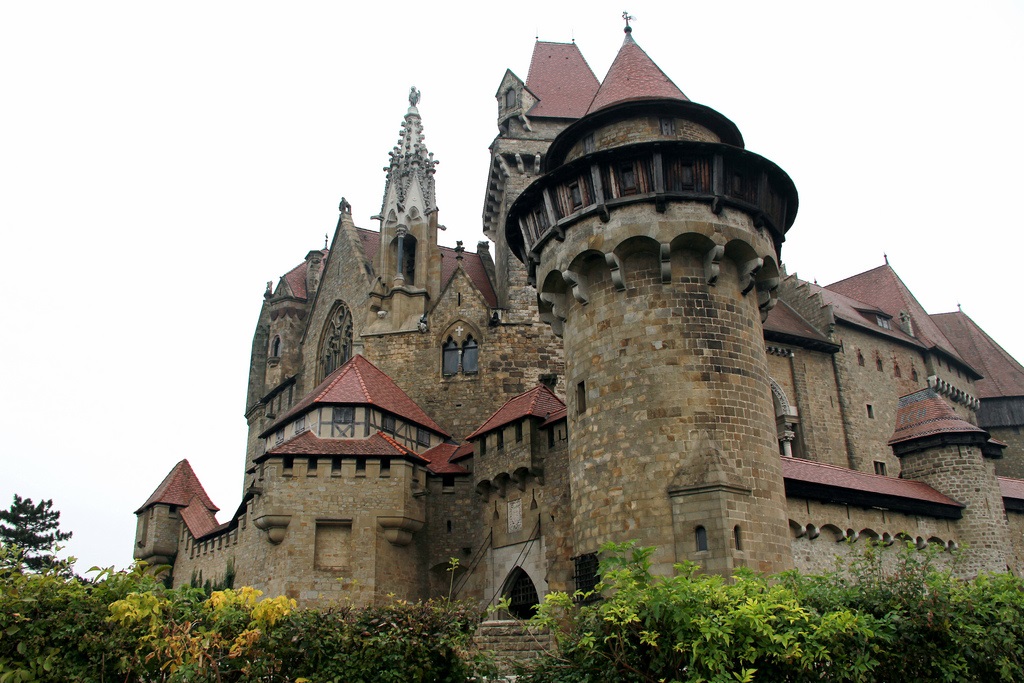
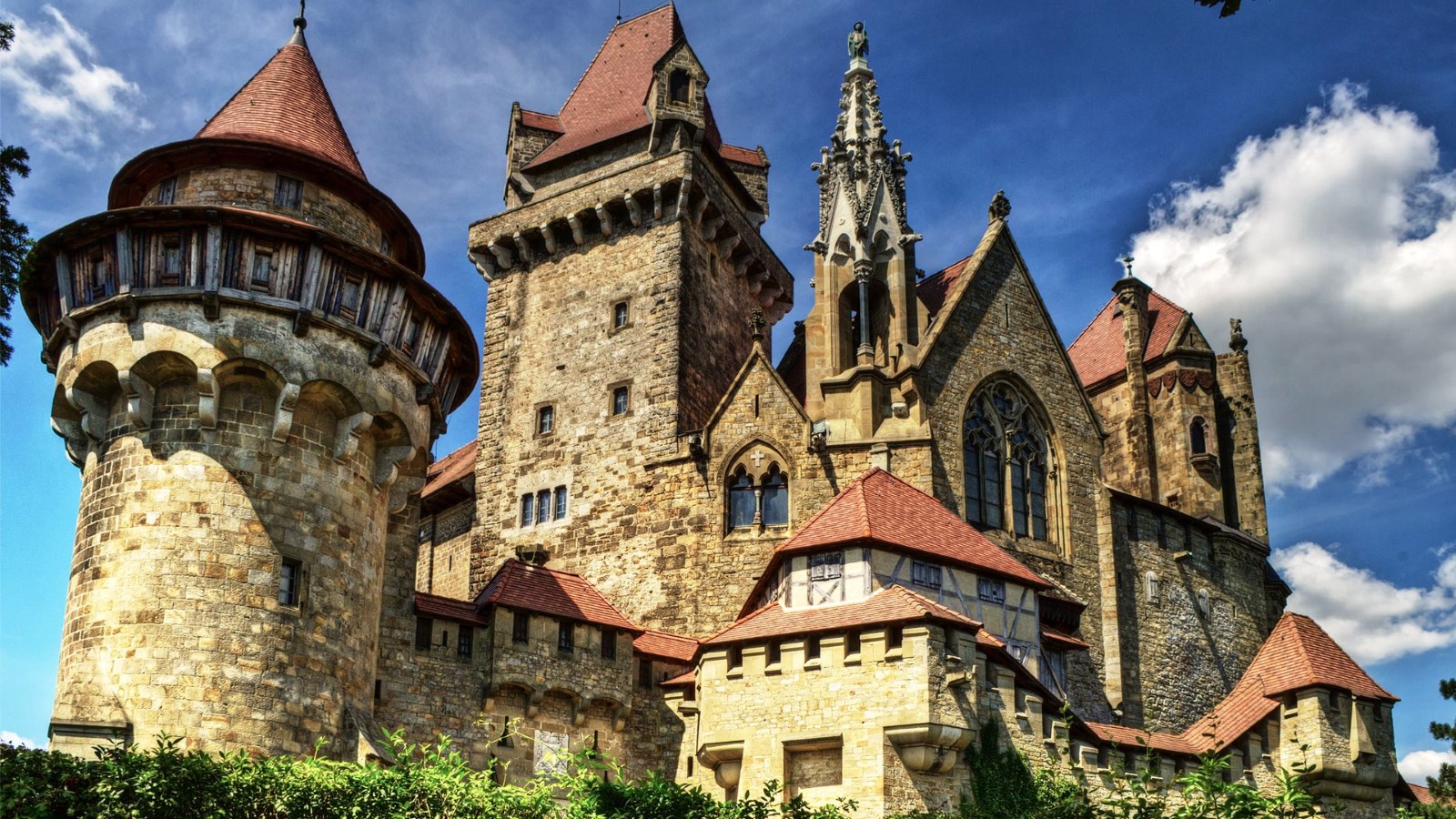
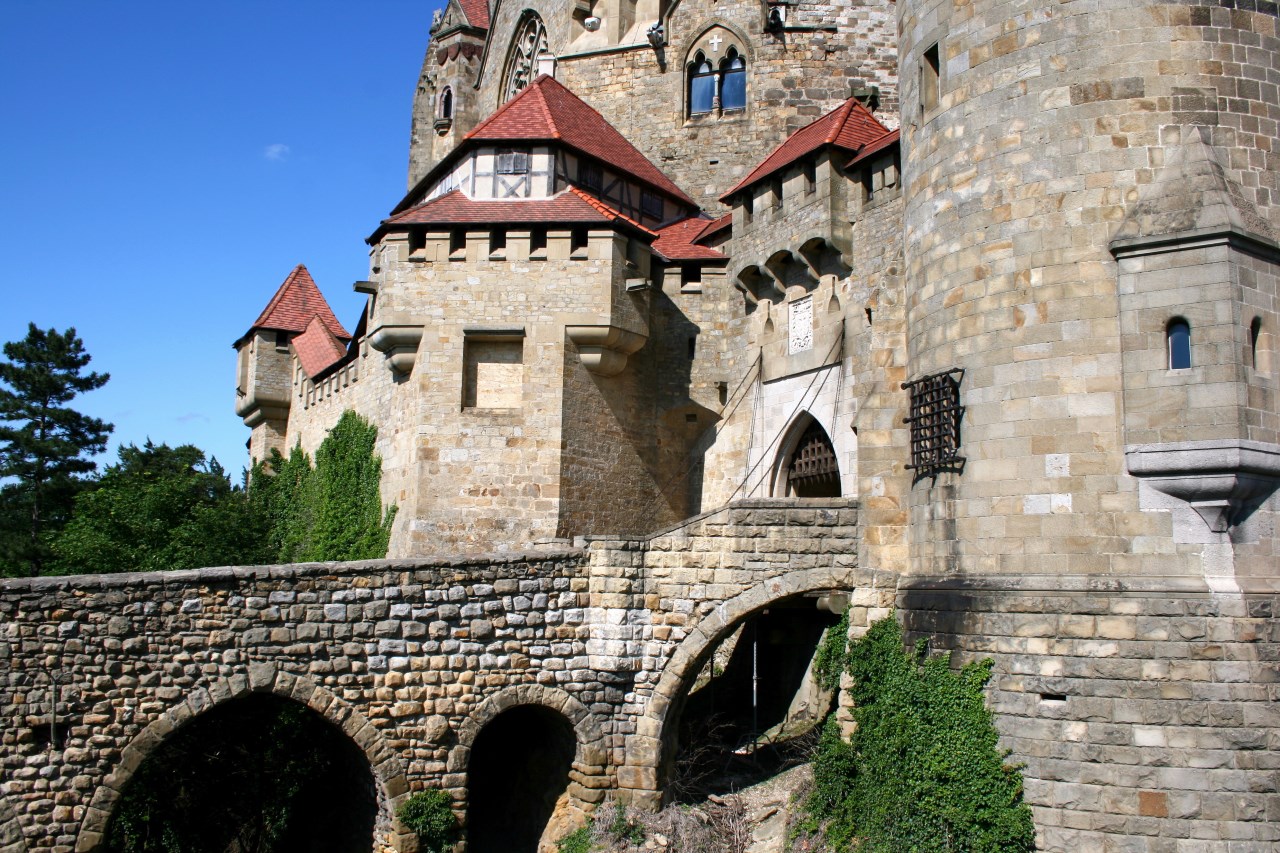

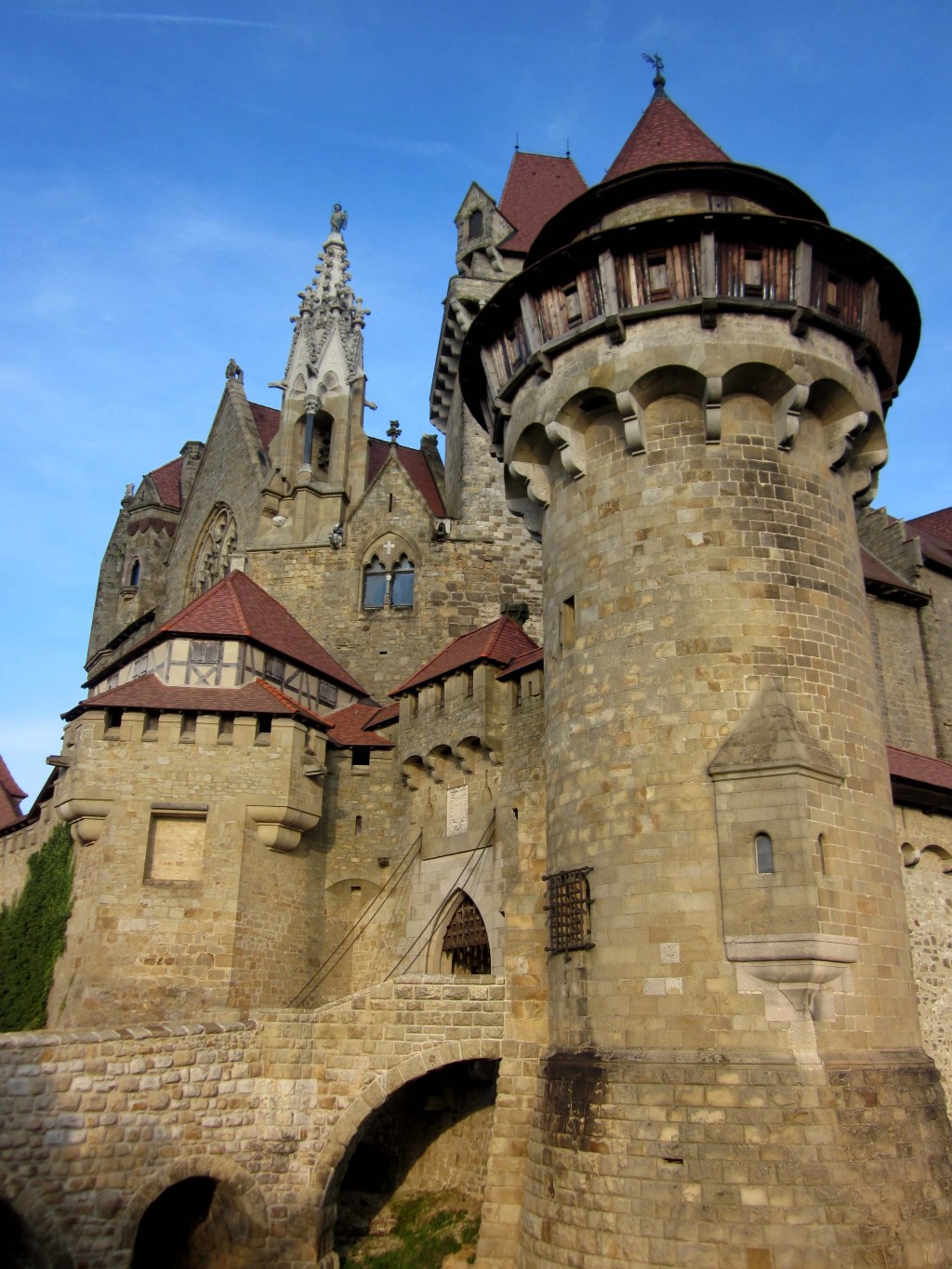
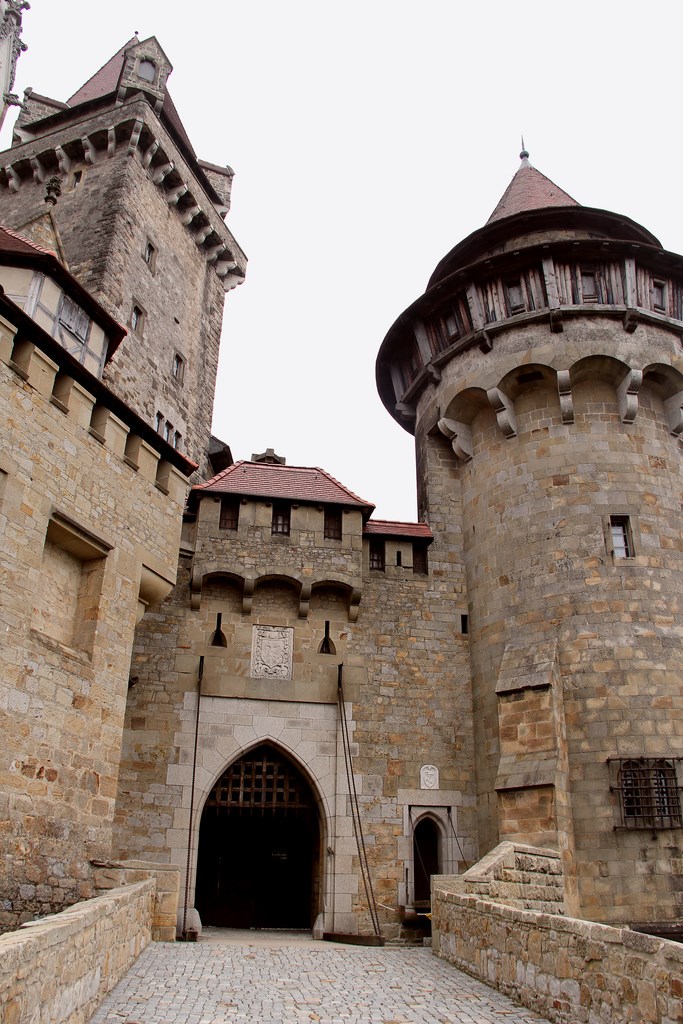
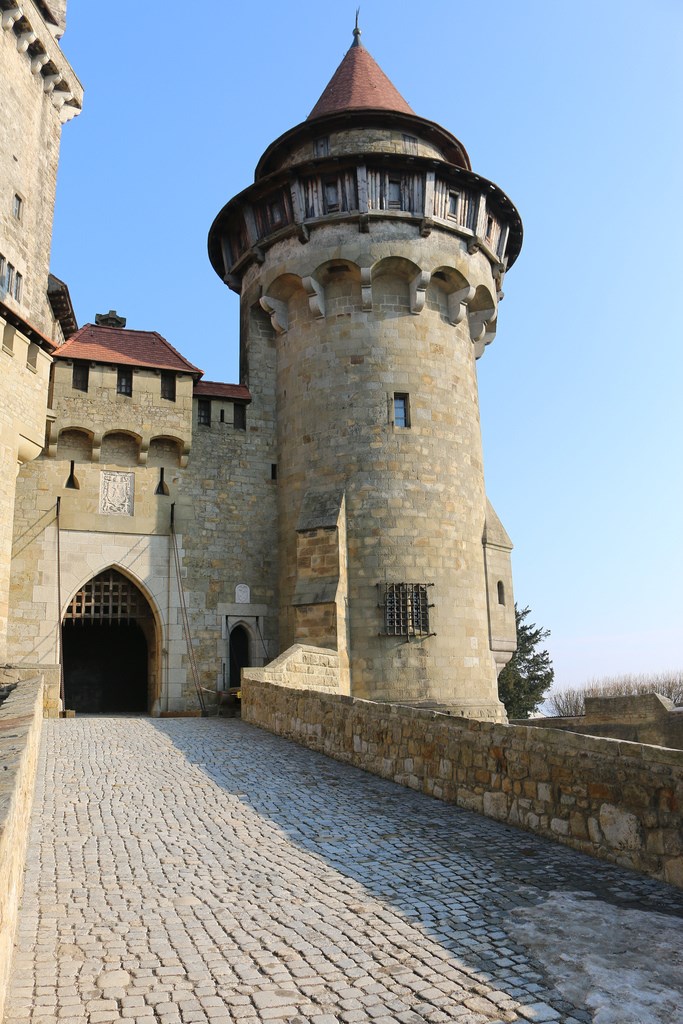
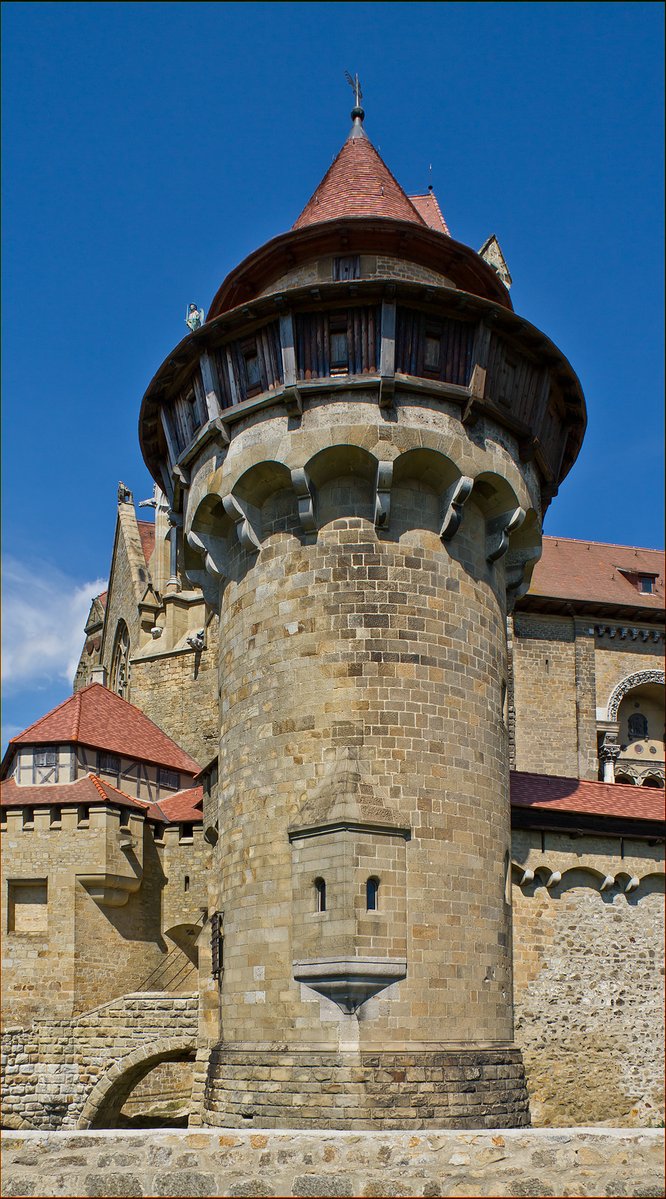
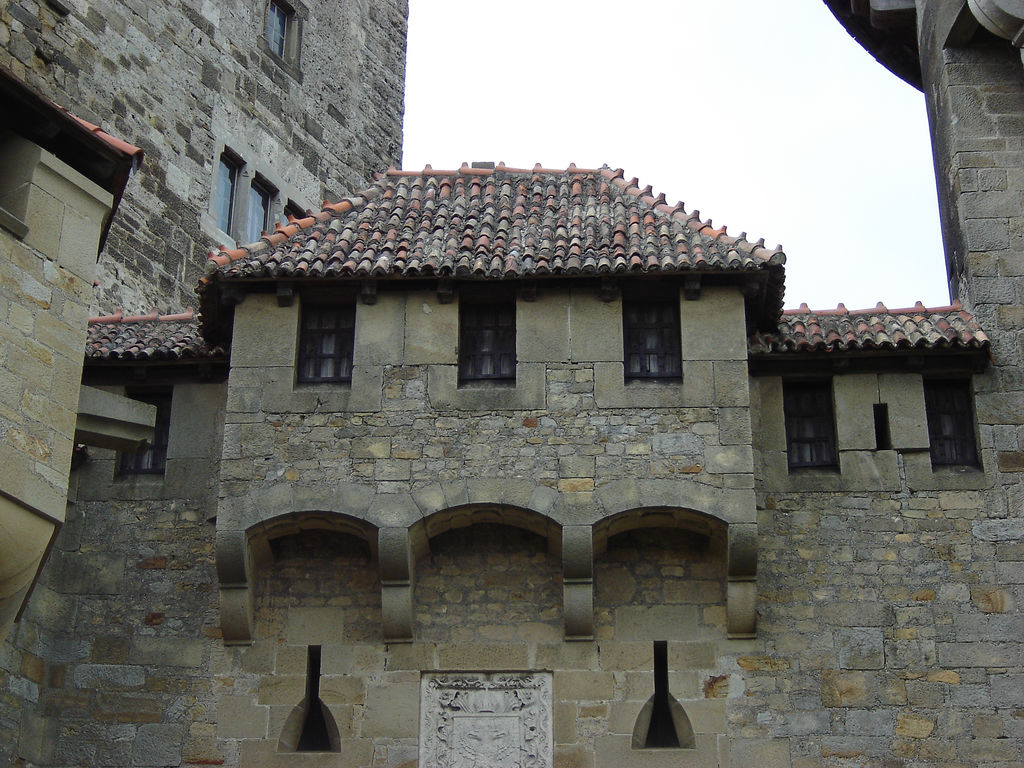
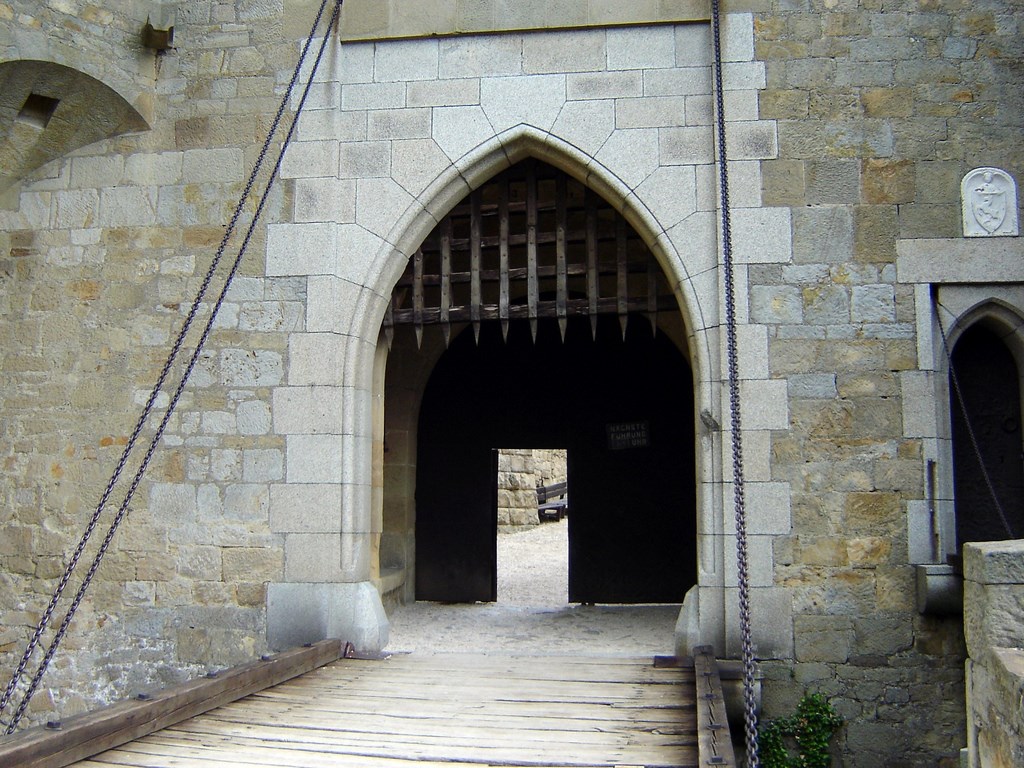
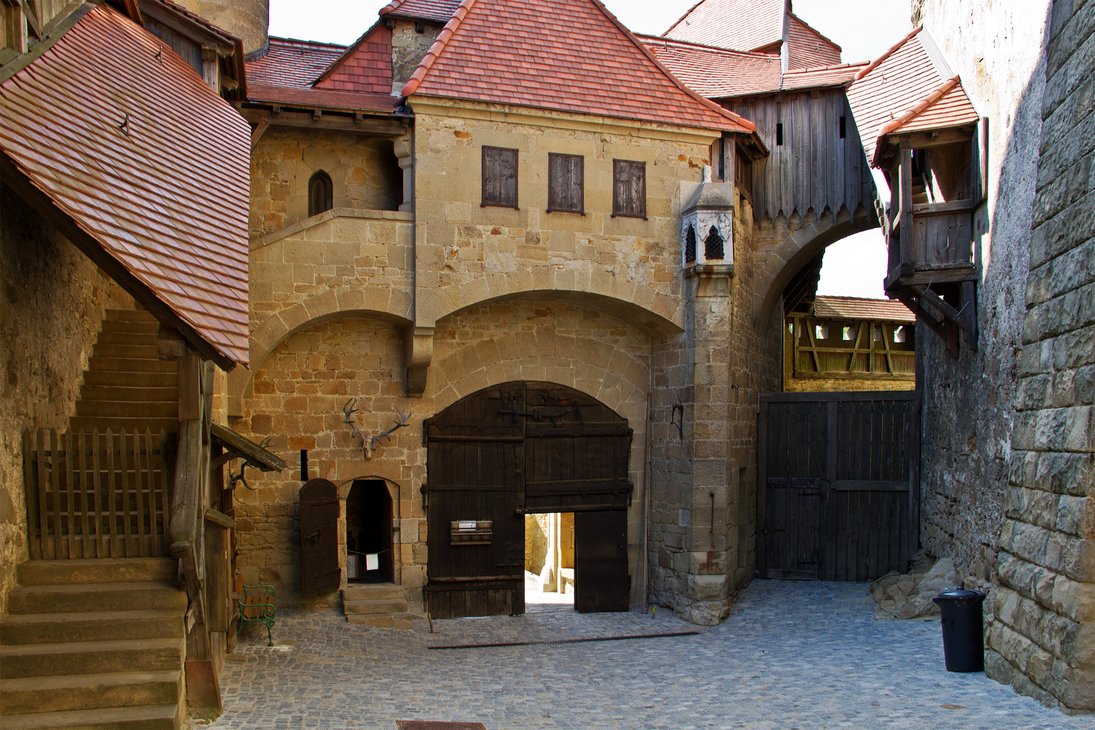
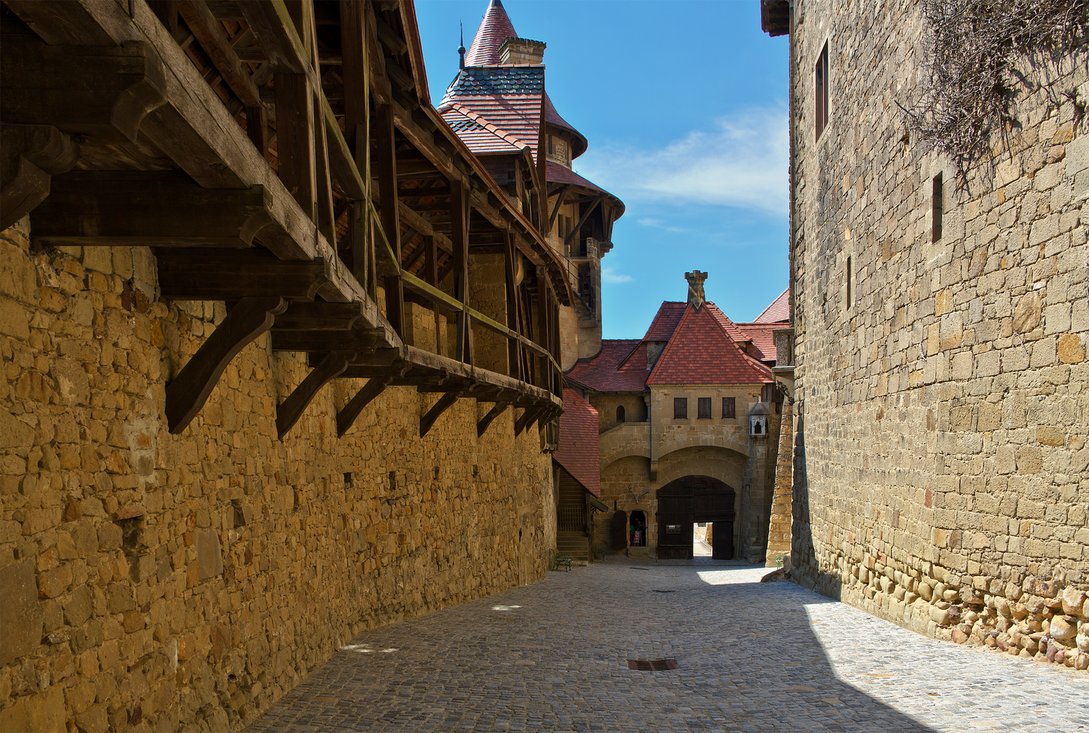

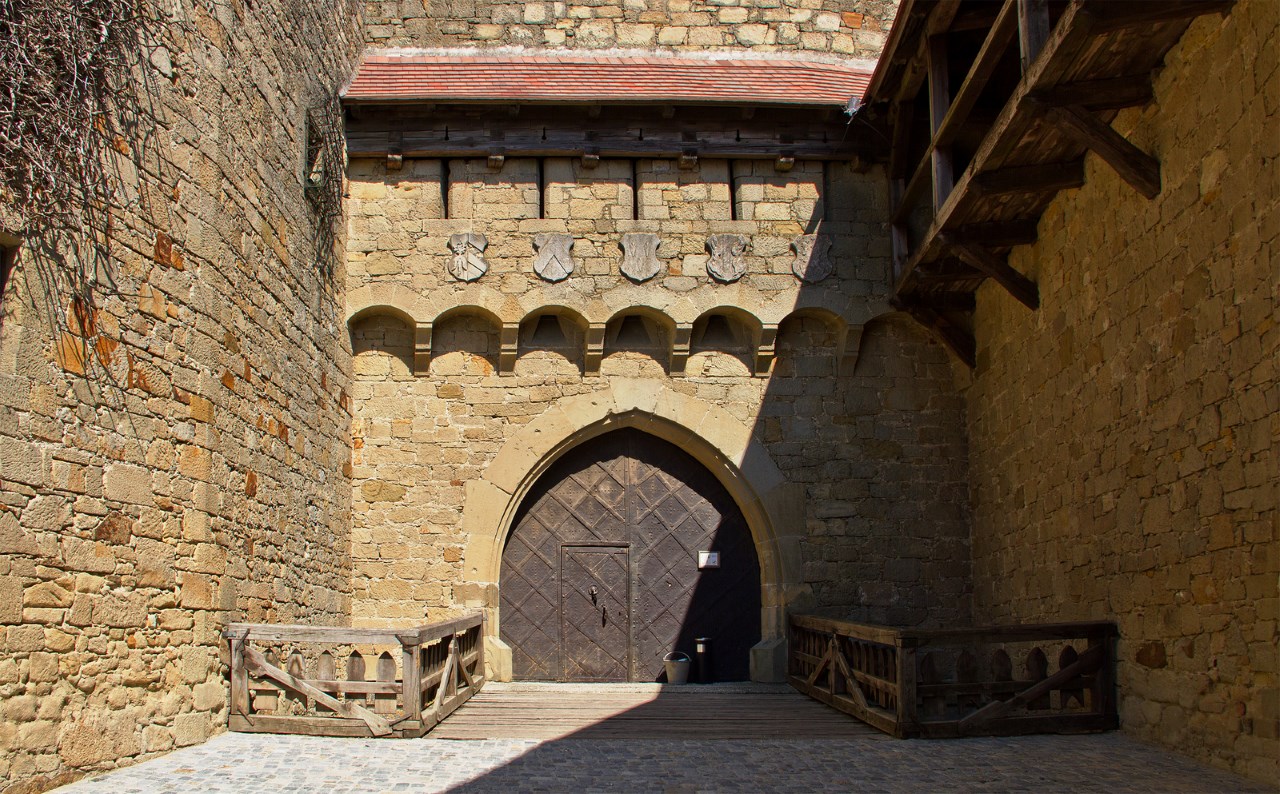
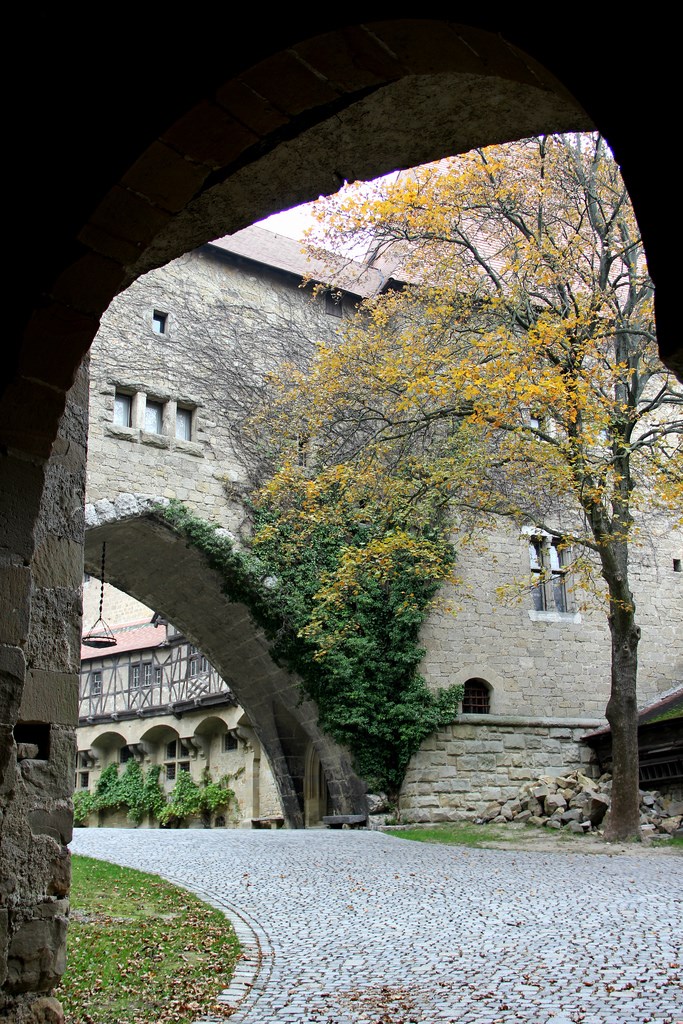
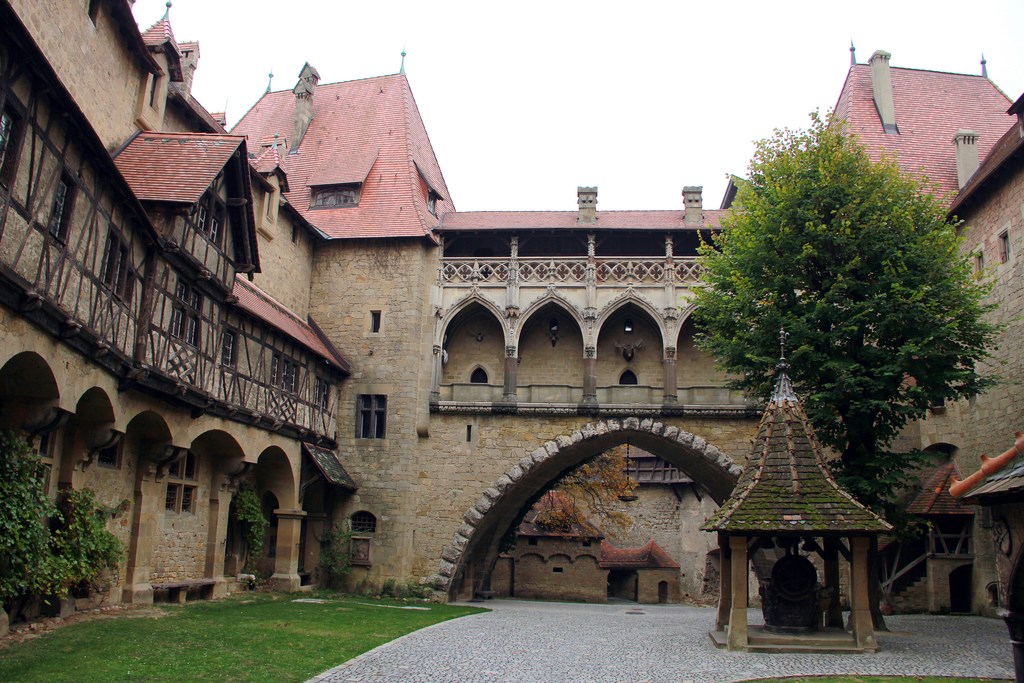
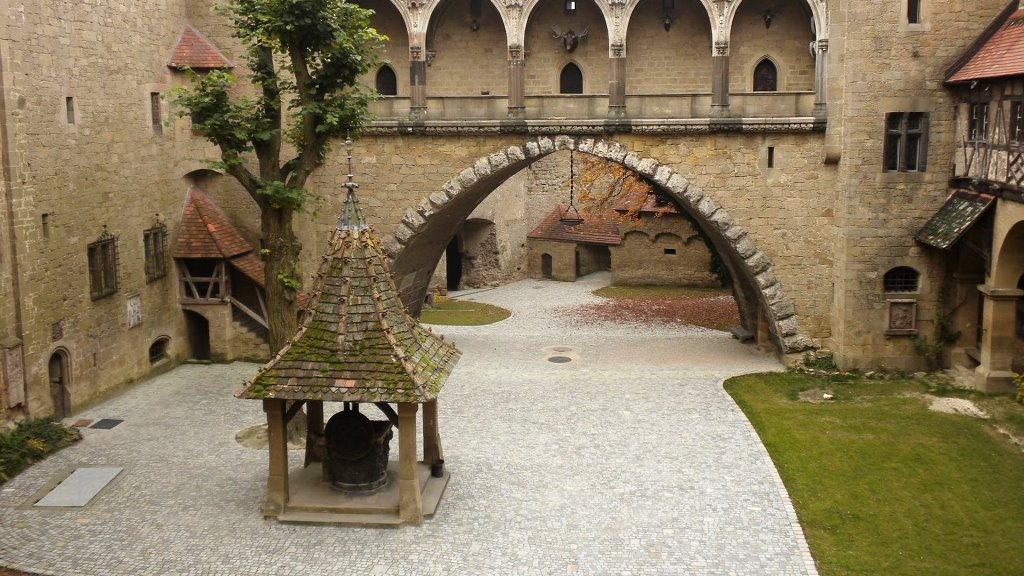
This castle is owned by the Wilczak family. The original owner Count Johann Nepomuk Wilczek was a very rich man and decided that he wanted to rebuild the old medieval castle, which had been almost completely destroyed during the 30 Years War. Although the castle was originally medieval, Wilczek added some personal touches, which would not have originally been in the castle. He added in a library and also a small chapel.
We were lucky enough to get a tour inside the castle, but our professor says it’s become harder to do, because a book was stolen from the library. This also meant that we were not allowed to take photos inside the various rooms. Only the things outside were allowed to be photographed.
Because Wilczak was so rich, he funded his own expedition to the North Pole and has an island in the North Pole named after him. He didn’t hesitate in adding his own personal touches to the castle, by purchasing different things from all over the world that he found appealing.
Another fun fact about the castle is that part of the film The Three Musketeers (the 1993 version) was filmed here.
The outside of the castle was impressive, especially since it had a drawbridge and a moat. The moat was once filled with water, but now it’s been grown over.
Before entering the castle we visited the armory, which had a vast array of swords, armor, spears, lances, maces… anything you could possibly think of was there! The collection also included crossbows, which essentially brought an end to the time of the knights, because they could no longer fight their opponents with swords. There were also weapons of the farmers. Pitchforks, scythes, and our professor’s favorite weapon the Morningstar. Which was named as such, because it came from the east, where the sun rises. This weapon was essentially a metal ball, with four-inch long spikes protruding from all sides.
We were able to try on the chain mail that a knight would have worn. I only tried on the headpiece, but it was really heavy! Addison tried on both the head piece and the shirt. He looked quite official with the vast array of weapons behind him. Just the chain mail could way 50-60 kilograms or 110-130 pounds! Think about carrying around that weight all the time and then add on the weight of the rest of the armor. I don’t know how they moved!
Inside the castle we visited the chapel, which was very small, but with enough room for a crypt, where the family is buried. One of the reasons Wilczek built it was because he needed a place to bury his family.
We also got a tour of a bedroom, which had a chair-like bed in it. The mattress was sitting halfway up, because people believed that if you slept lying down you were dead and it was a sort of superstitious idea. They also had a board hanging on the side of the bed, so that they could write down any prophetic dreams they had during the night.
One of the rooms we saw was basically the hunting room. It had a giant stuffed boar, which I was not really a fan of, but it also had a fake horse head, with the horn of a narwhal attached. It was supposed to be a unicorn that Wilczek had hunted.
In the next room were a number of tables and one corner was called Wilhelm’s Corner, because it was where Emperor Wilhelm sat when he visited the castle for its grand opening.
Lastly, we were taken to the medieval kitchen, where many of the cookware is original. The table in the kitchen is so large that the entire room had to be built around it, rather than bringing it in after construction.
On our way out of the kitchen we ran across the owner of the castle, also a Wilczek. He was showing his family or friends around the place too.
Like I said before, much of the castle was reconstructed, but it was also adjusted so that it fit Wilczek’s taste. He added in pieces of architecture he liked from all over the world. Windows from Hungary, wood from Germany, stone from Italy.
The section of the wall with the arches below comes from Italy.
Below is part of a church, taken from Slovakia. It is also one of the reasons the archway into the courtyard is so large. Normally, in a medieval castle, it would be much smaller so that it would not be easy for enemies to enter the courtyard and therefore take the castle.
https://kcarmod.wordpress.com/tag/kreuzenstein/
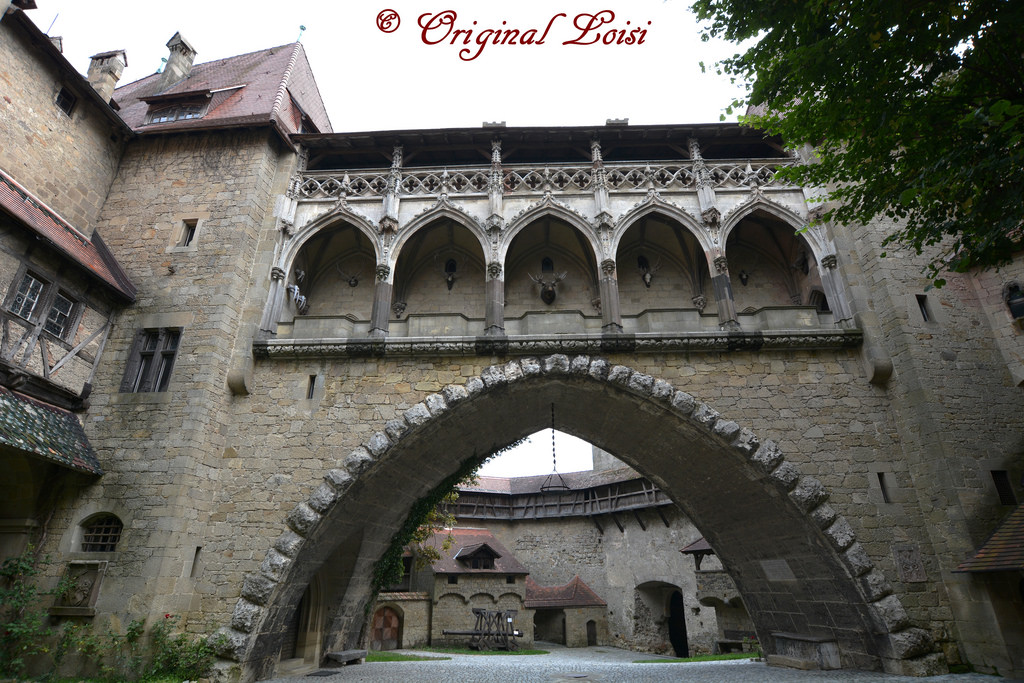
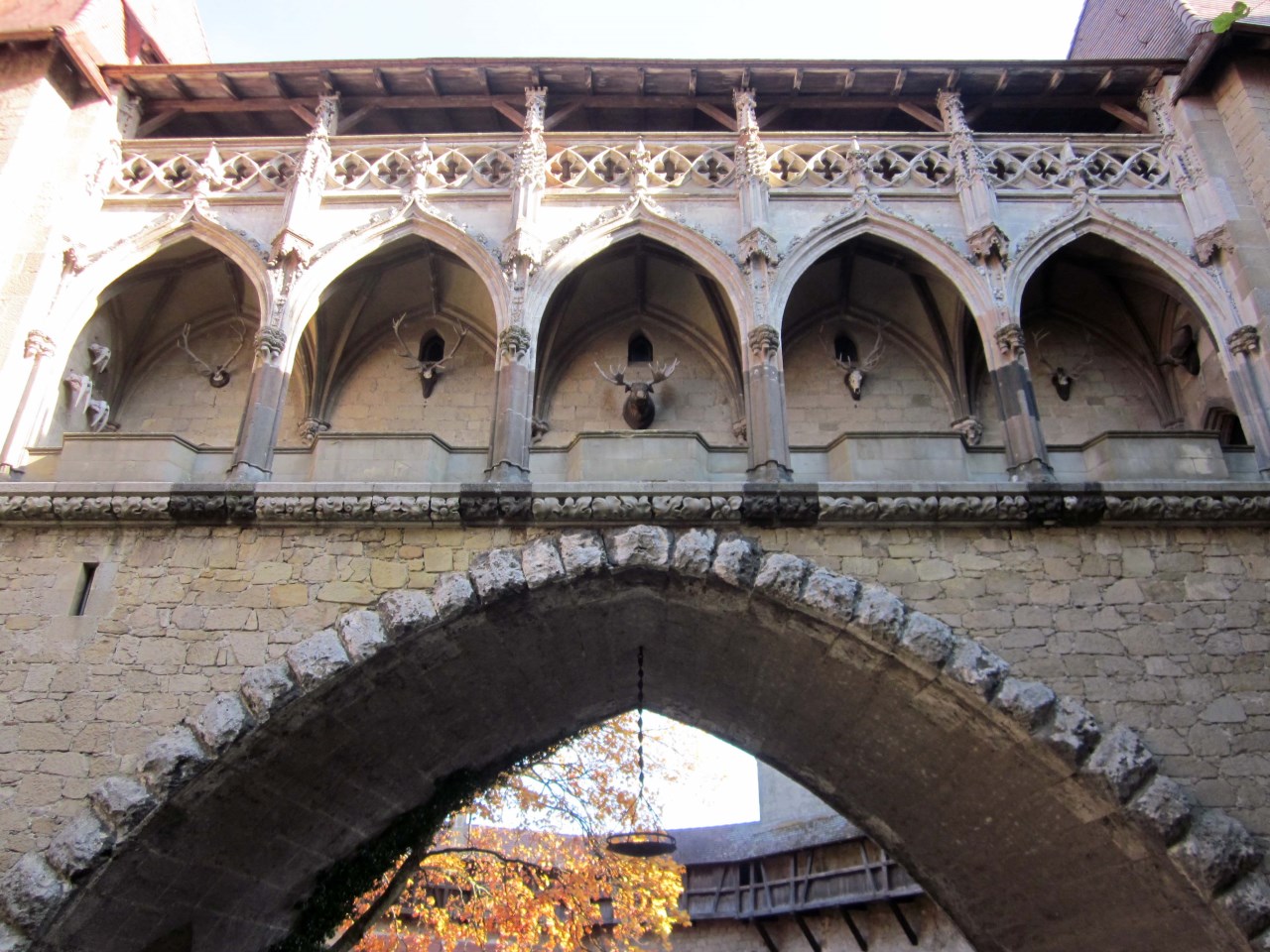
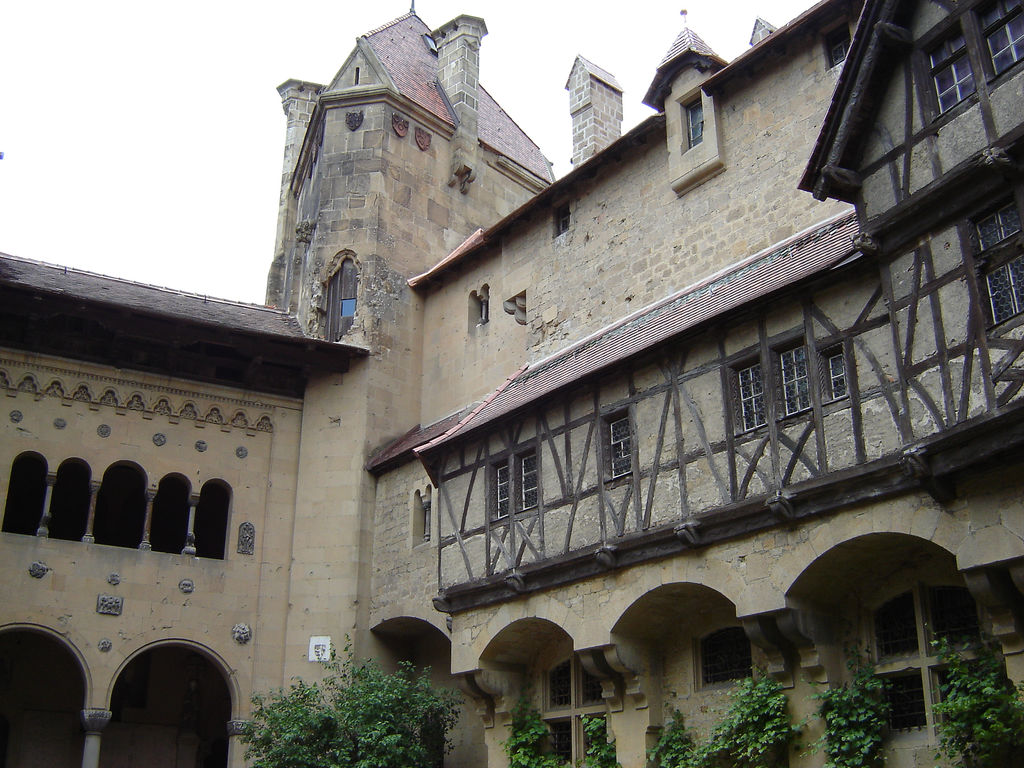
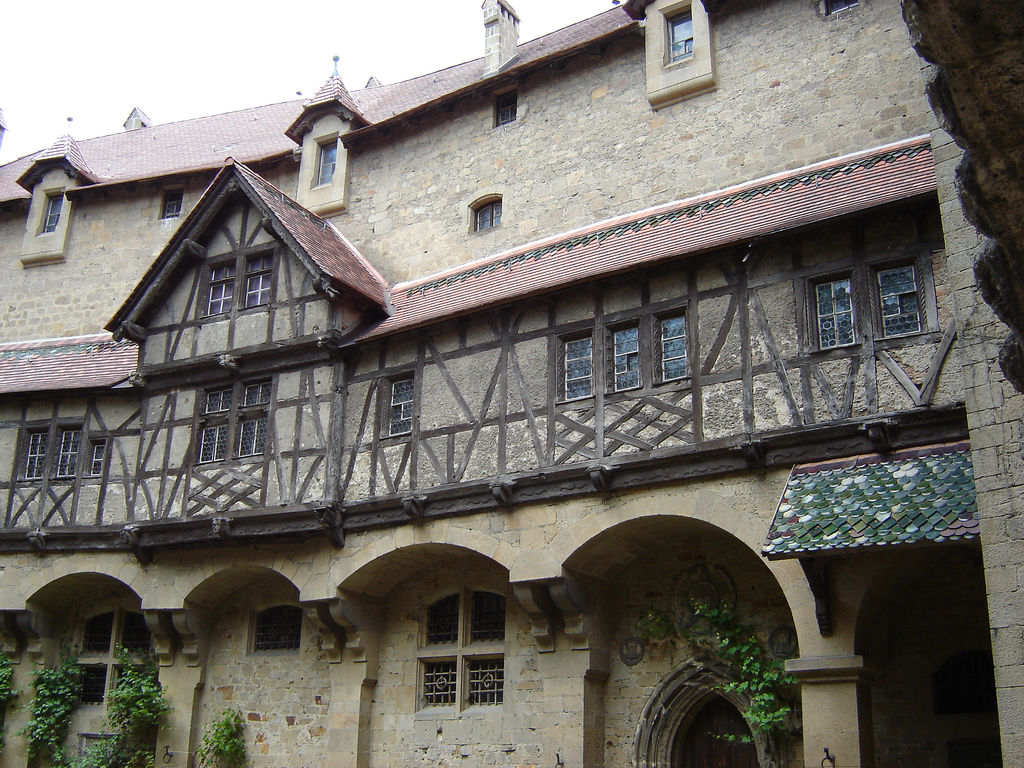
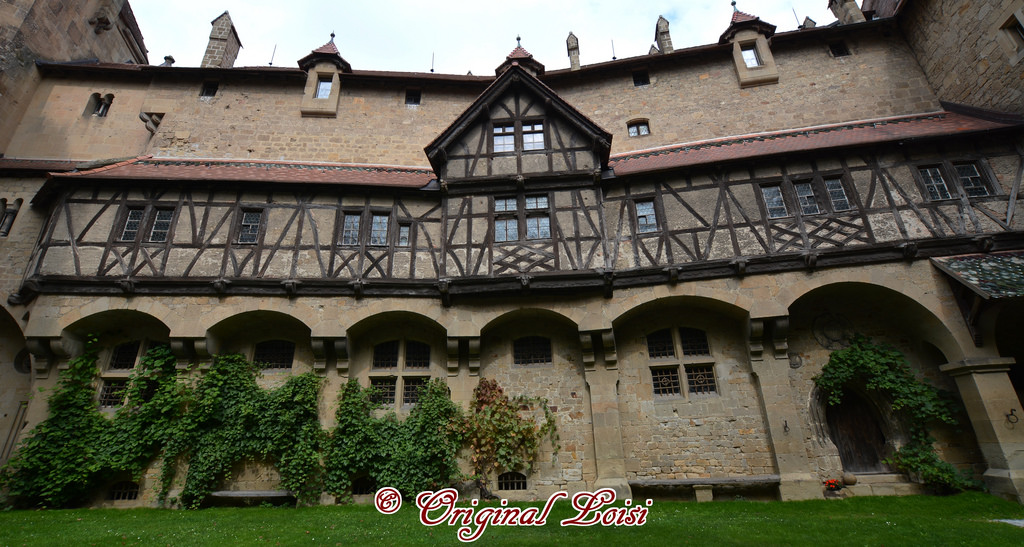
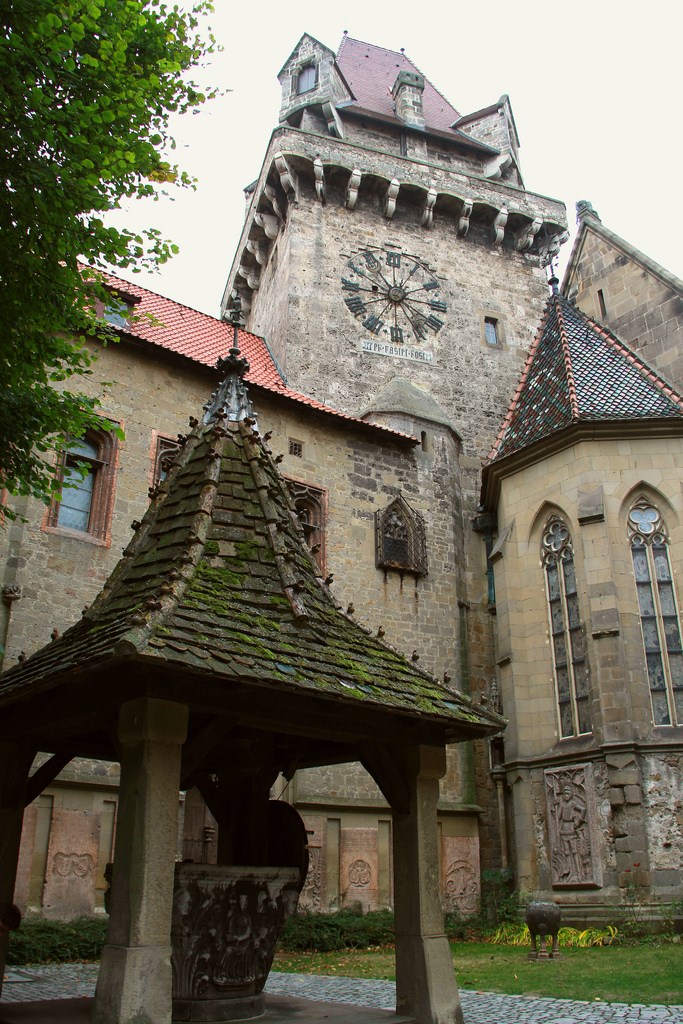
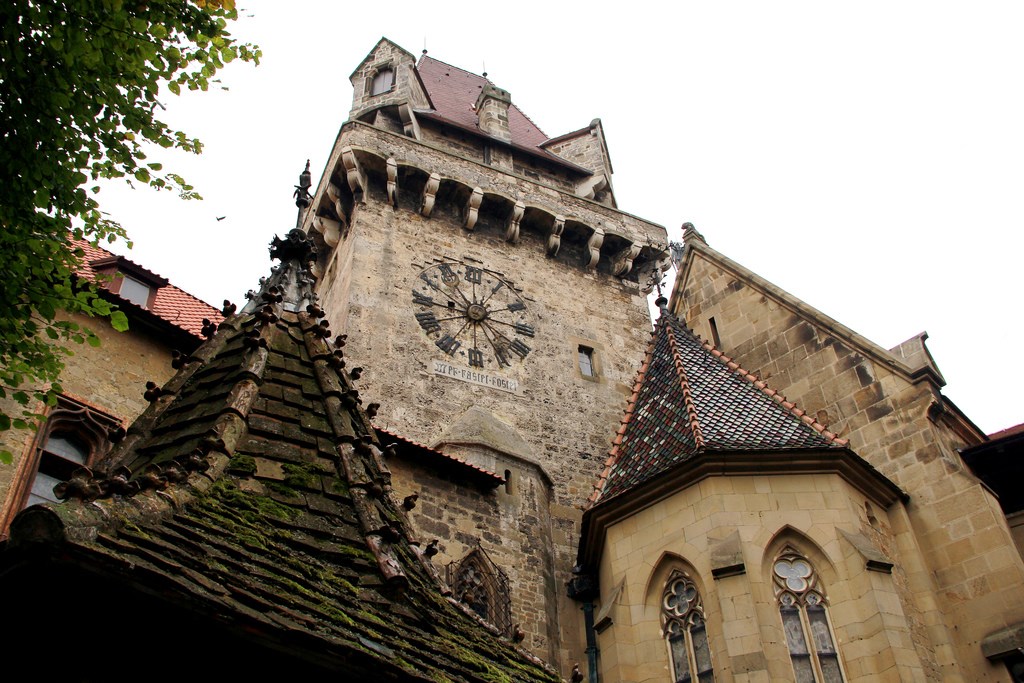
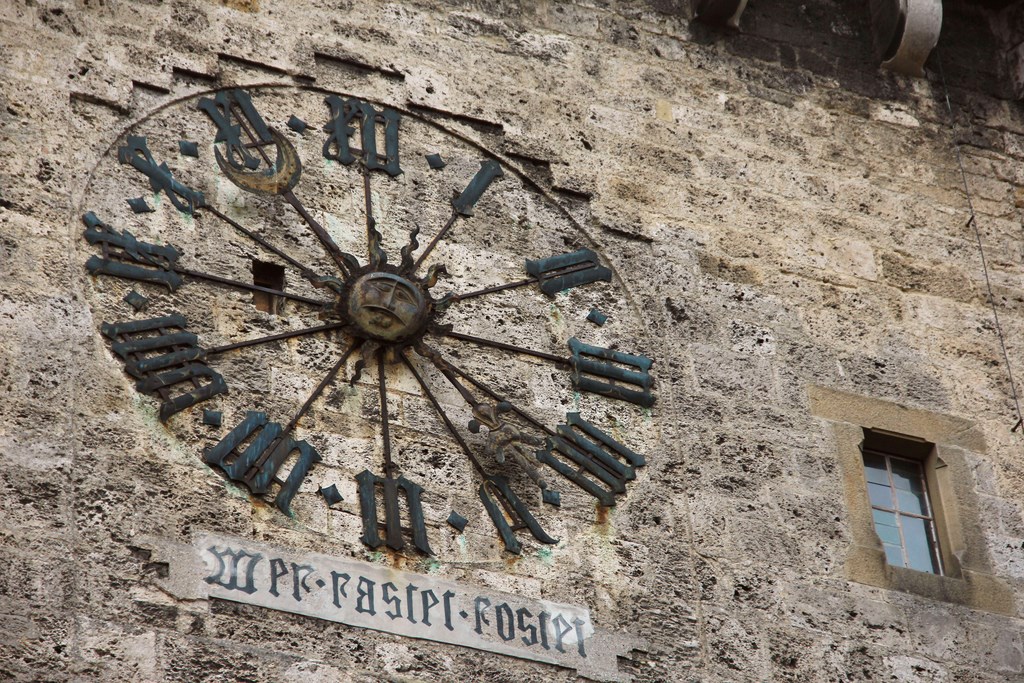
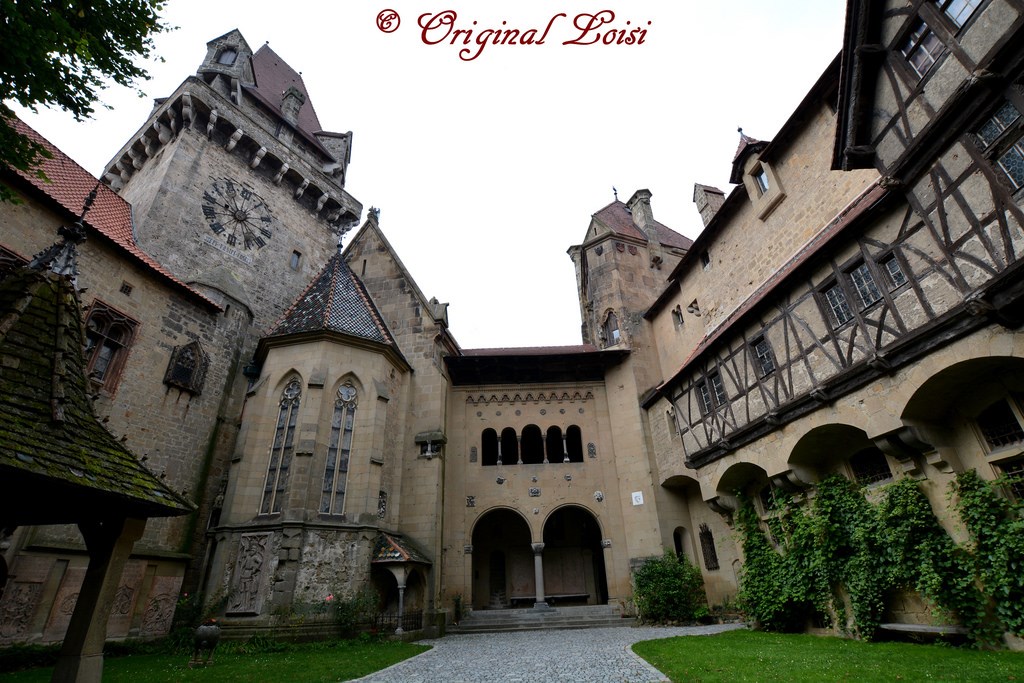
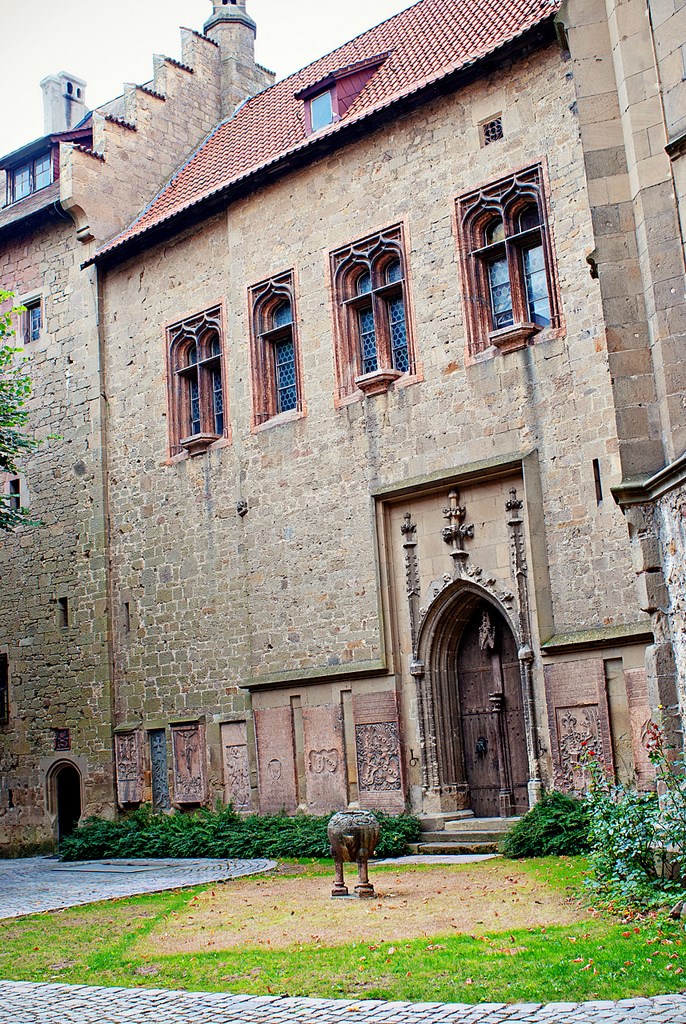
Kreuzenstein, un castillo lleno de remiendos
Por Miriam Marti
Situado en Leobendorf, a muy pocos kilómetros del norte de Viena, encontramos una joya arquitectónica única en el mundo llamada Castillo Kreuzenstein o Burg Kreuzenstein. Los orígenes de este complejo medieval se remontan al siglo XII, si bien es cierto que este dato no engloba la totalidad del castillo, ya que su particular historia sitúa el complejo un poco más tarde como veremos a continuación.
Emplazado en el lado norte del Danubio, Kreuzenstein descansa impasible al paso del tiempo encima de una colina, a unos 266 metros sobre el nivel del mar.
Esta mole de piedra ha vivido episodios importantes a lo largo de su historia. Hubo una época en la que se alababa su aparente robustez y su carácter inexpugnable, ya que no había sido conquistado hasta el momento. No obstante, durante la Guerra de los Treinta Años fue capturado y volado, quedando en un estado completamente lamentable.
El conde Wilczek se hizo con lo que quedaba del antiguo castillo a principios del siglo XIX. Este hombre poseía una fortuna impresionante, la mayoría producida por la posesión de minas de carbón en Silesia, y fue precisamente quien decidió restaurar de esta forma tan peculiar el castillo. Él y su familia comenzaron a traer elementos de distintos puntos de Europa. Rocas, ventanas, piezas diversas que les ayudaría a otorgarle nuevamente un aspecto de fortaleza.
El nuevo castillo se construyó encima del antiguo, y además, decidieron no escatimar en gastos llenando todas las habitaciones con valiosos muebles de miles de rincones de Europa. El resultado de su trabajo, el cual duró más de 30 años, fue una versión románico-gótica de la antigua fortaleza medieval. Un lugar lleno de encanto que parece sacado de un cuento de hadas.
A día de hoy, este idílico lugar es uno de los más visitados en las inmediaciones. Cabe destacar que en el recinto se suelen celebrar recitales, ferias e incluso exposiciones de aves rapaces. Además, es un escenario muy recurrente en producciones almenas y europeas, como por ejemplo en la serie de televisión en la que se adaptaba los Pilares de la Tierra de Kent Follet.
http://sobreaustria.com/2012/04/18/kreuzenstein-un-castillo-lleno-de-remiendos/
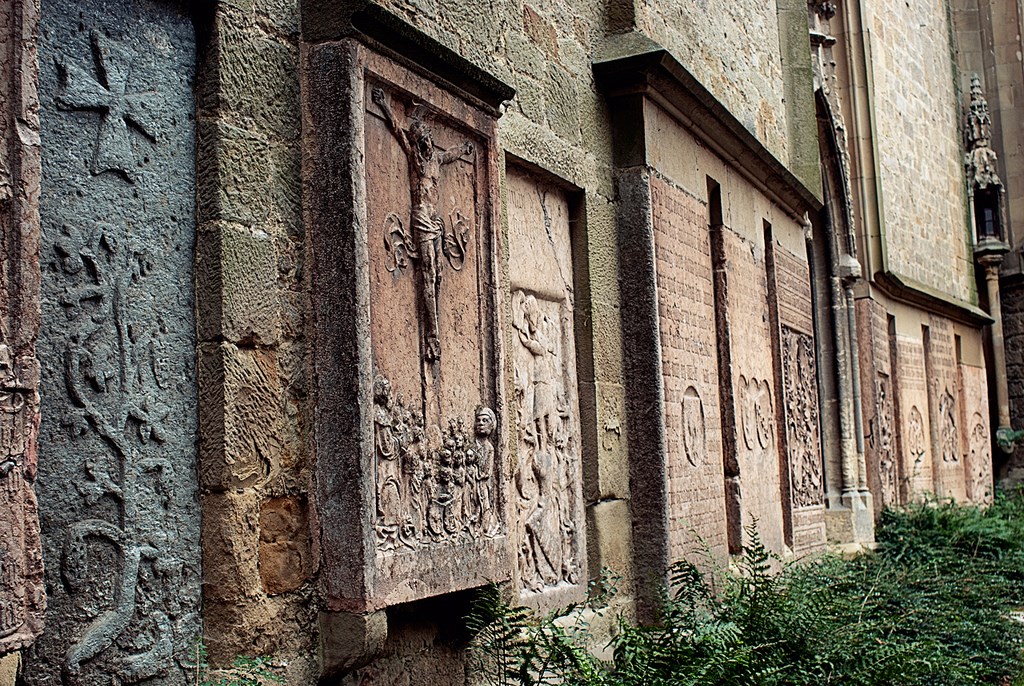
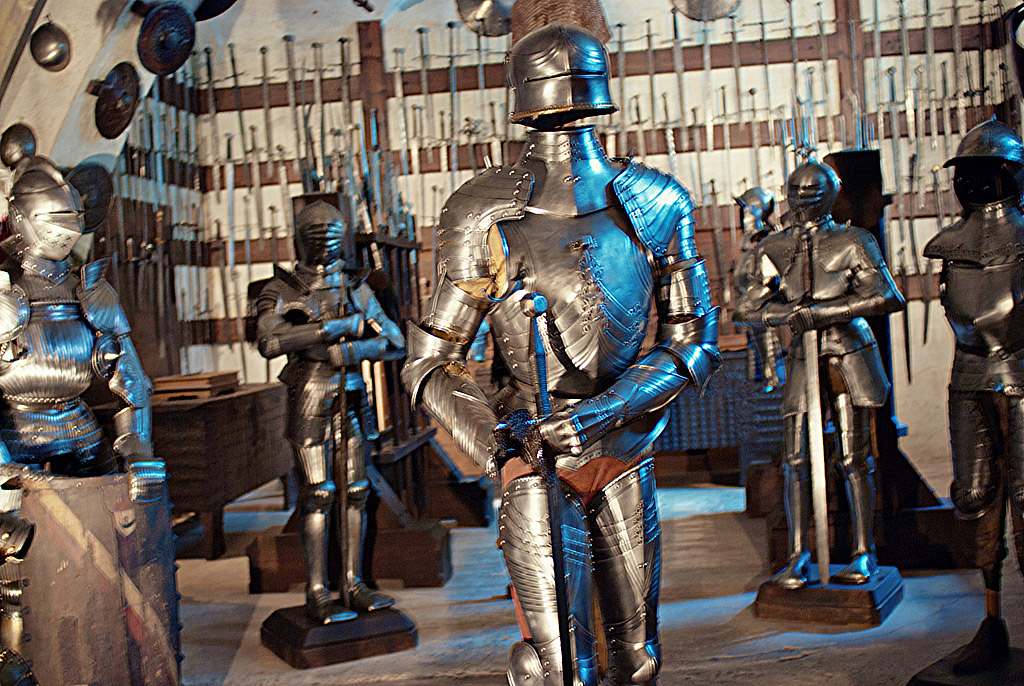
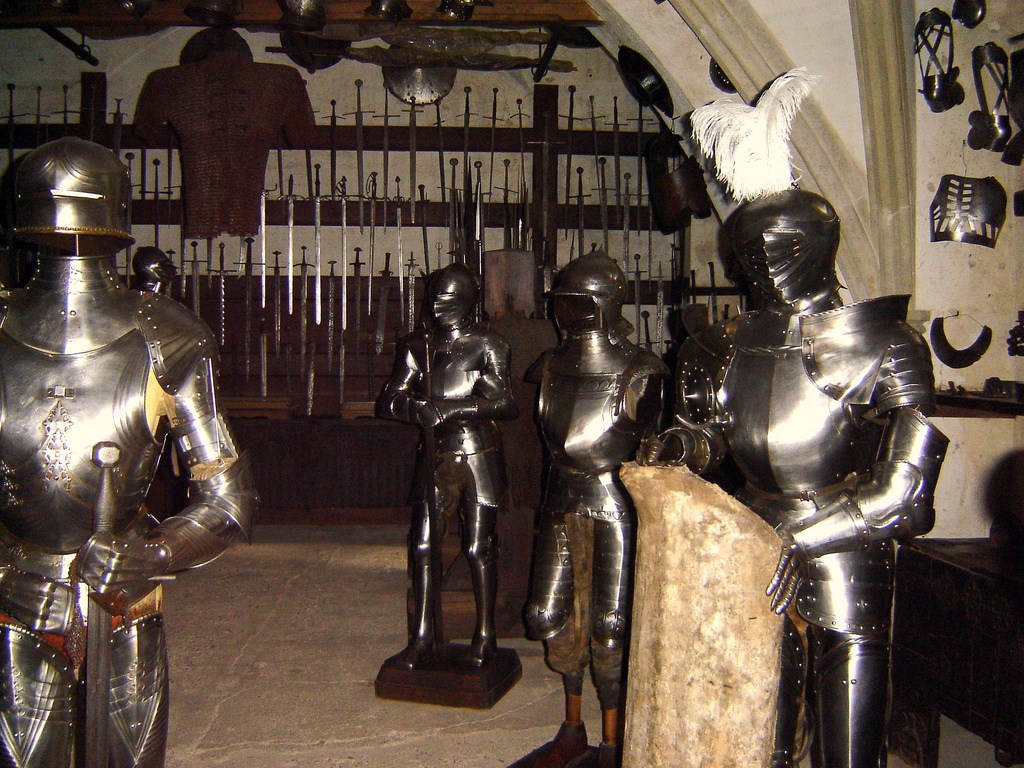
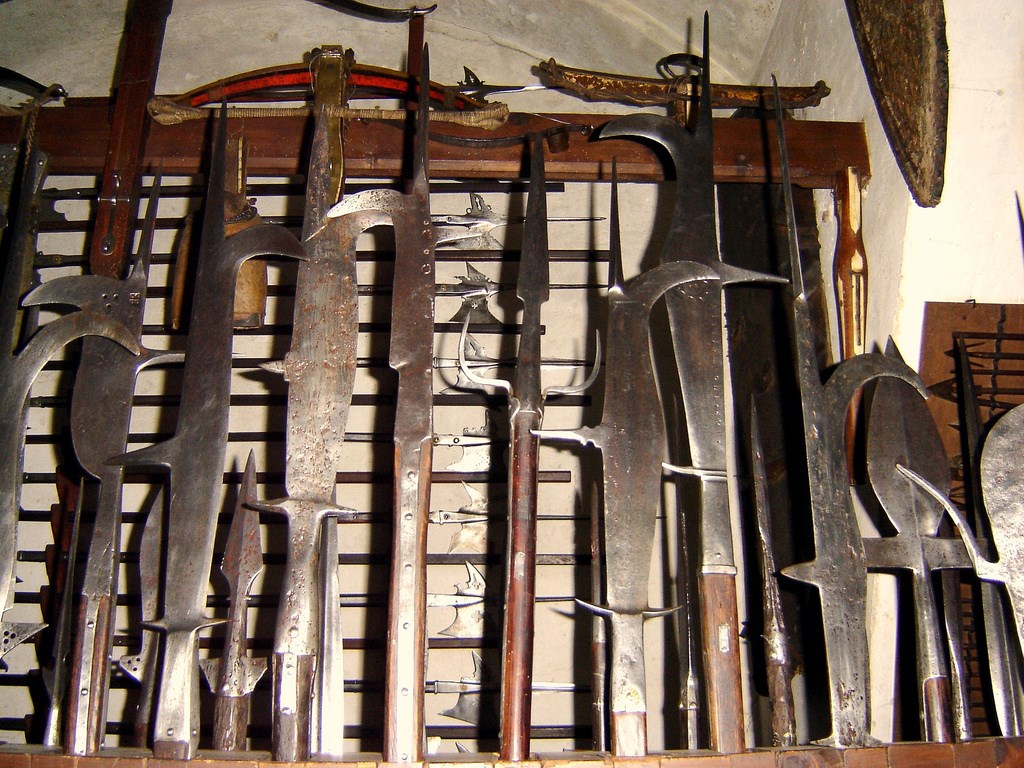
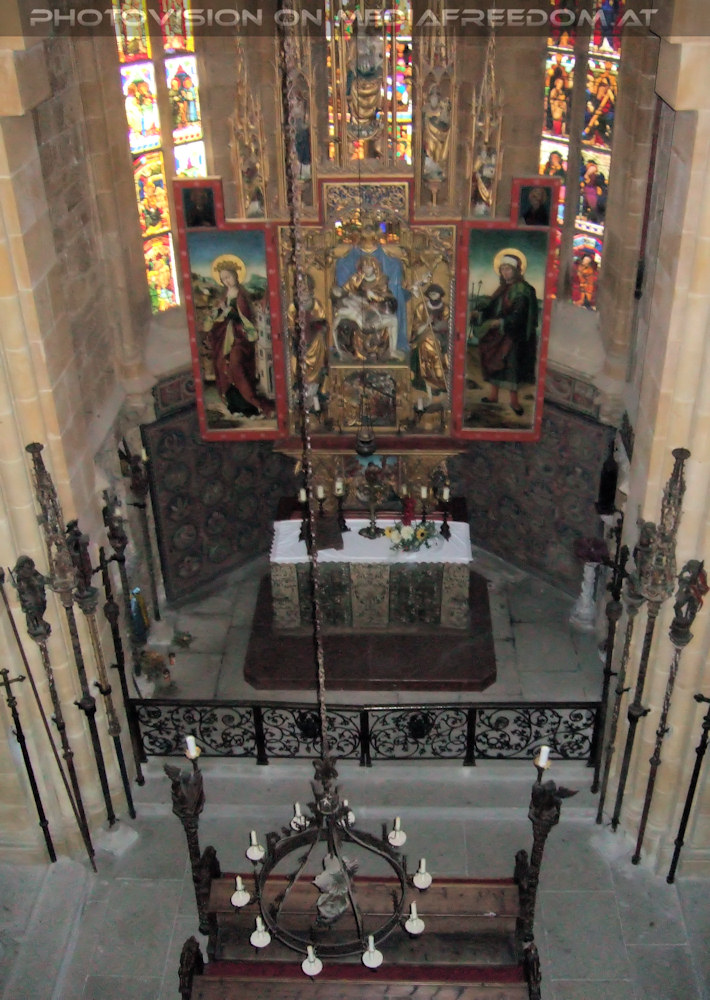
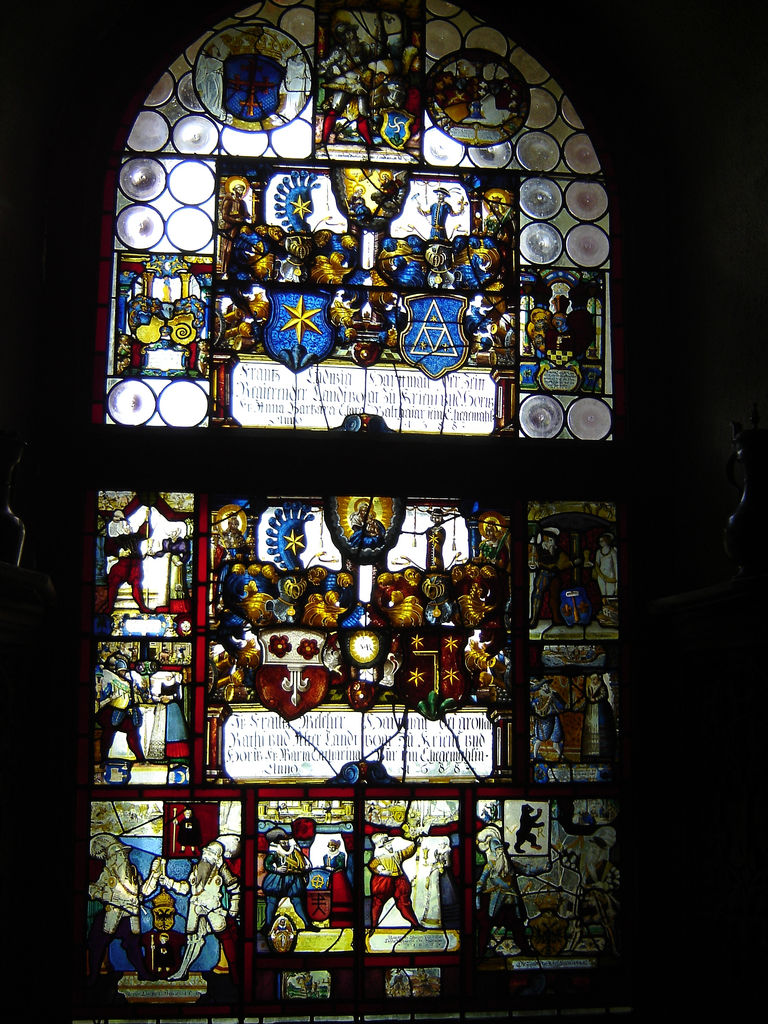
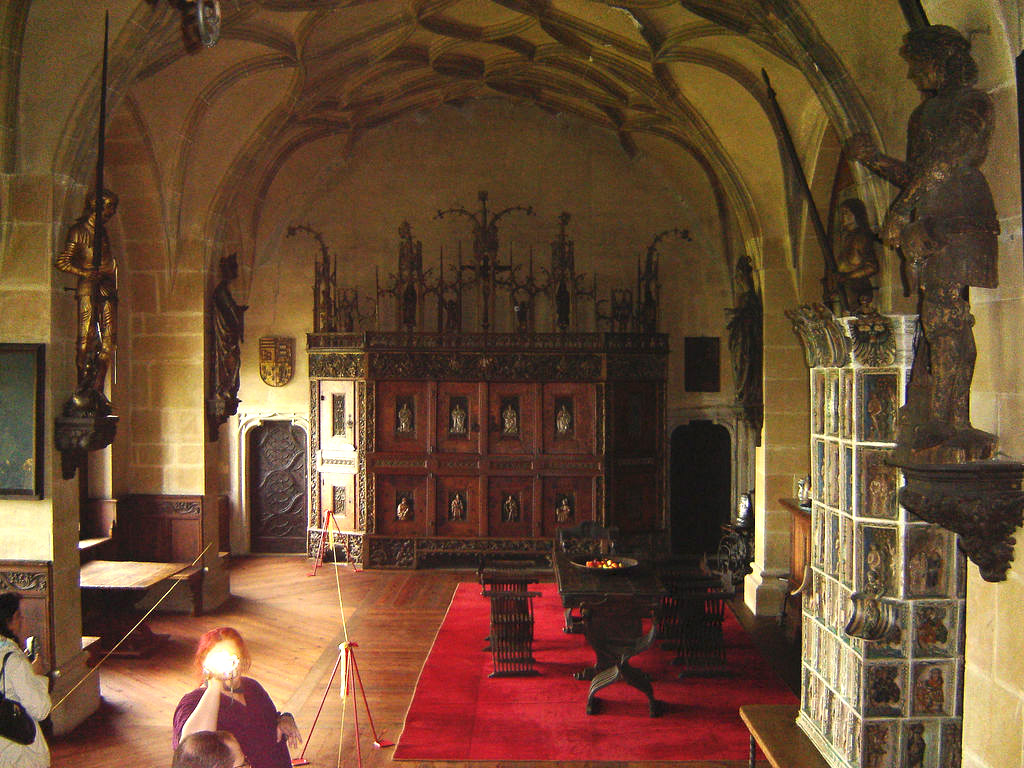
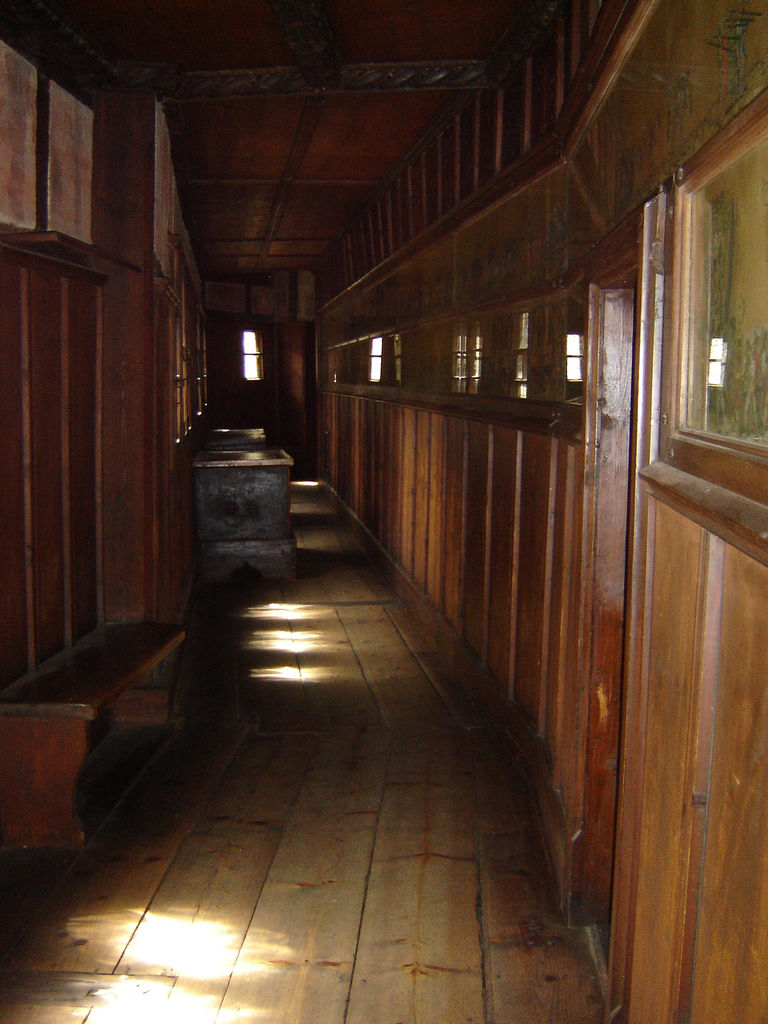
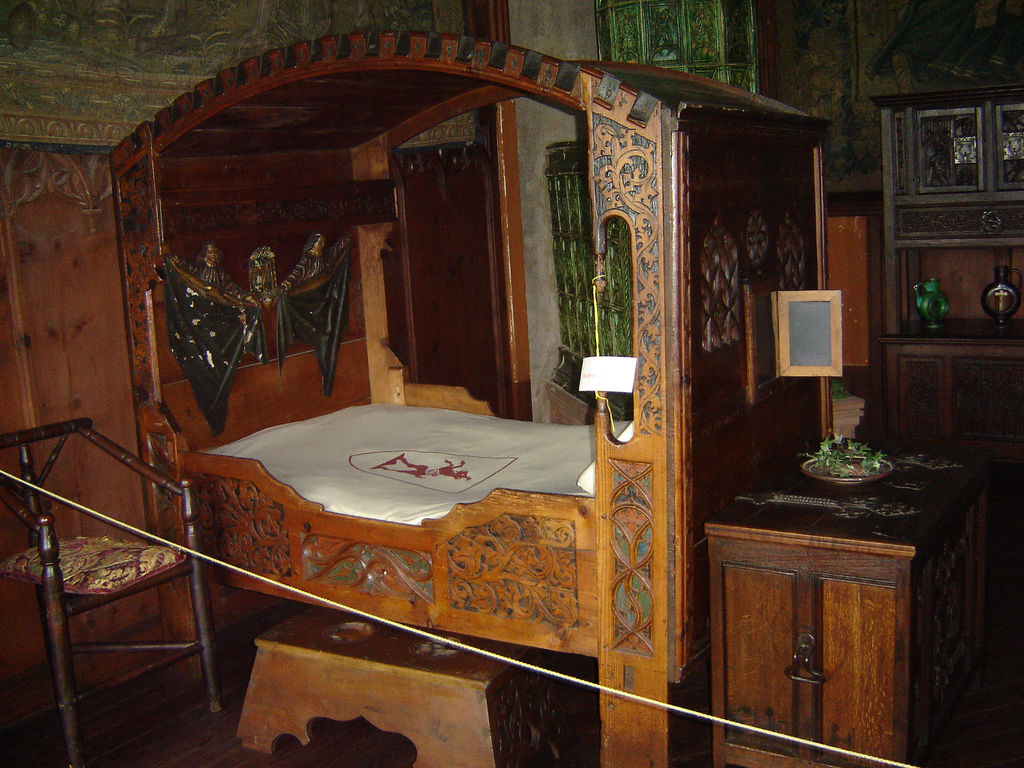
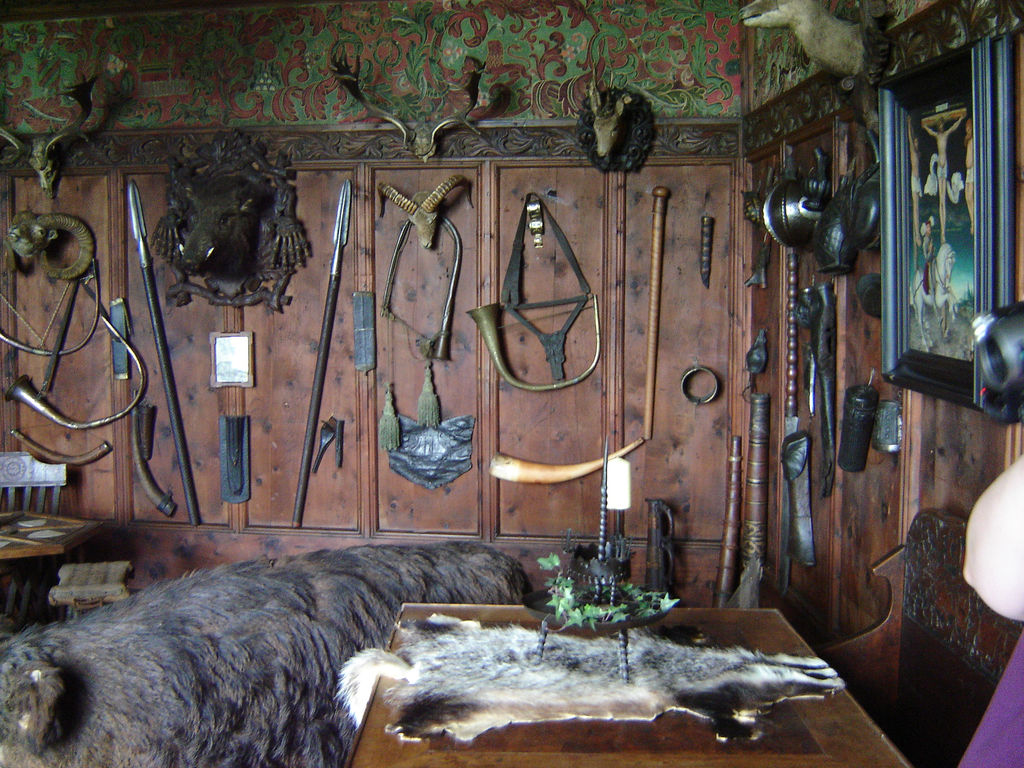
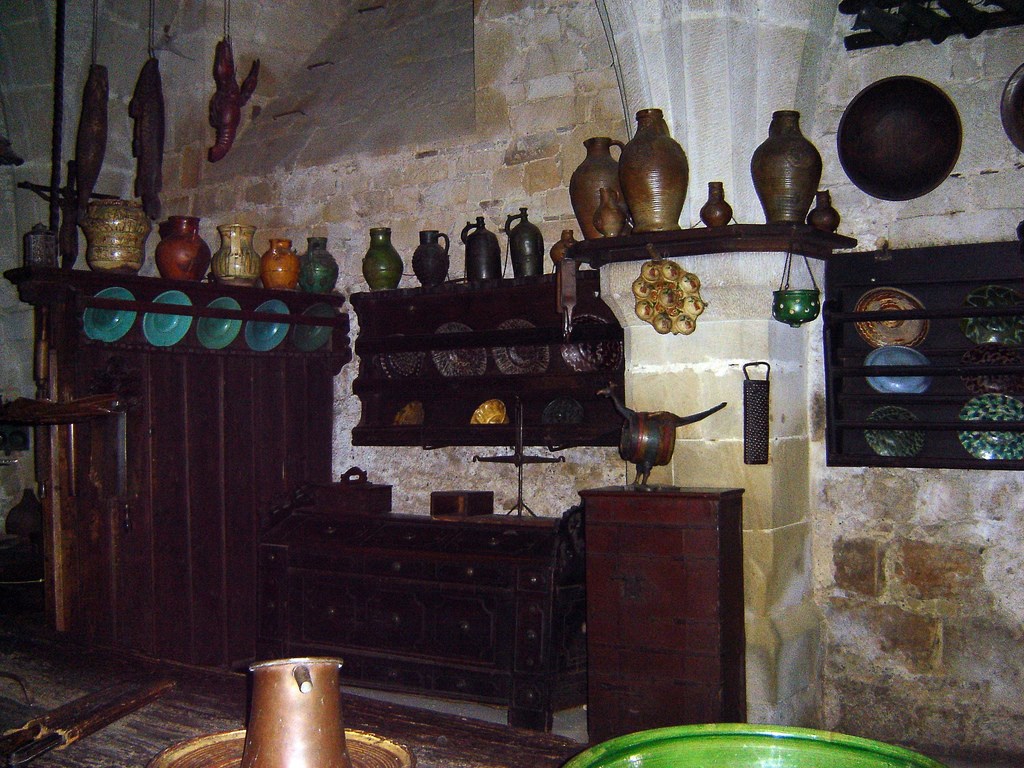
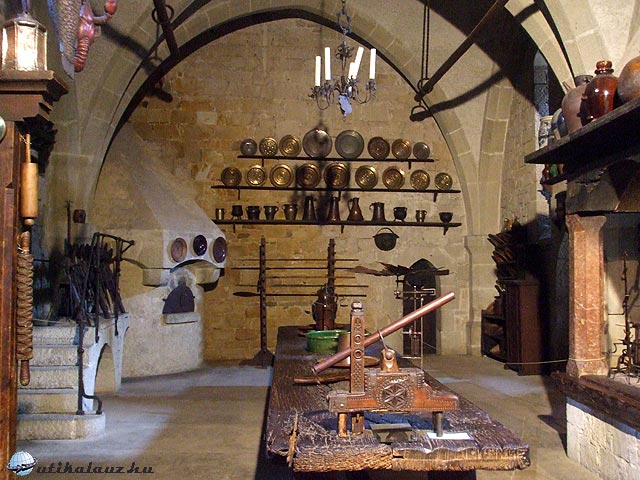
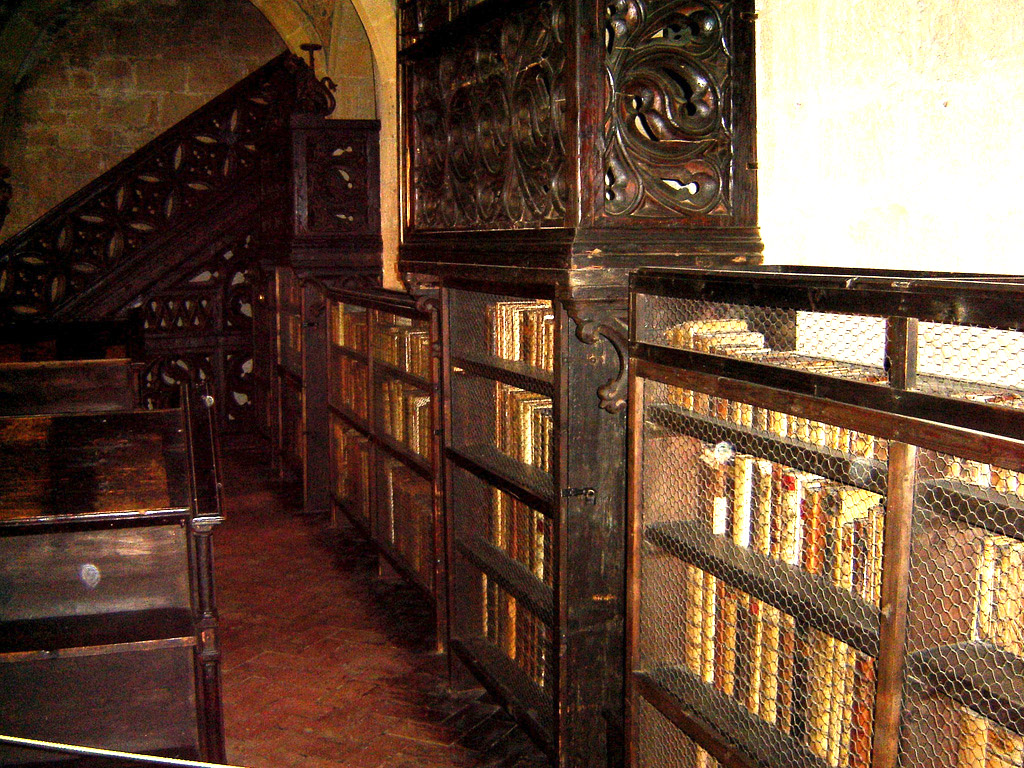
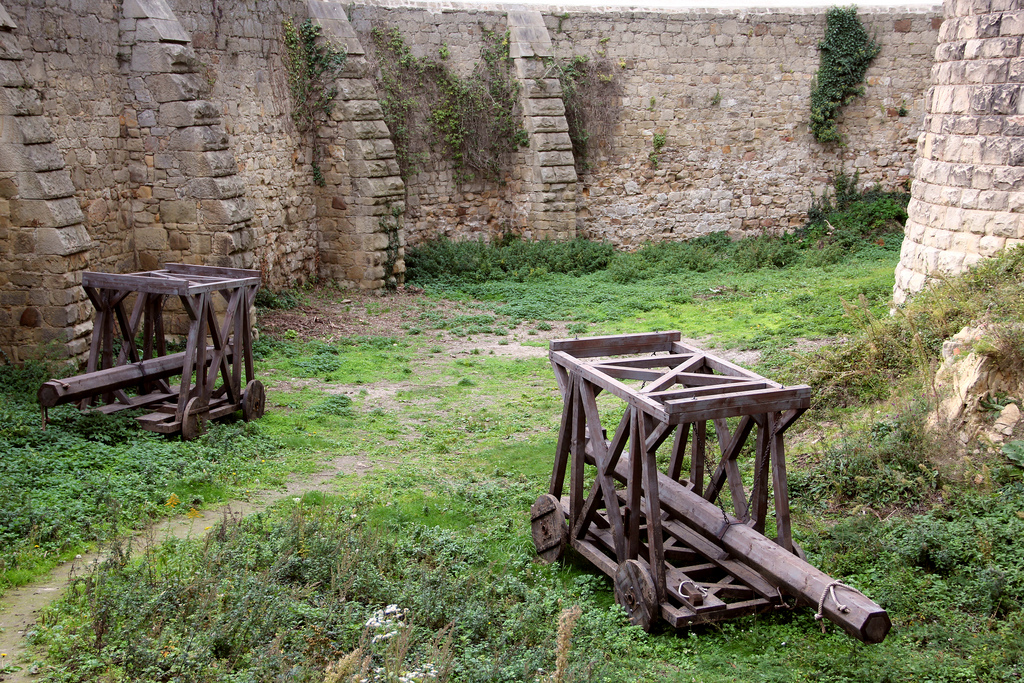
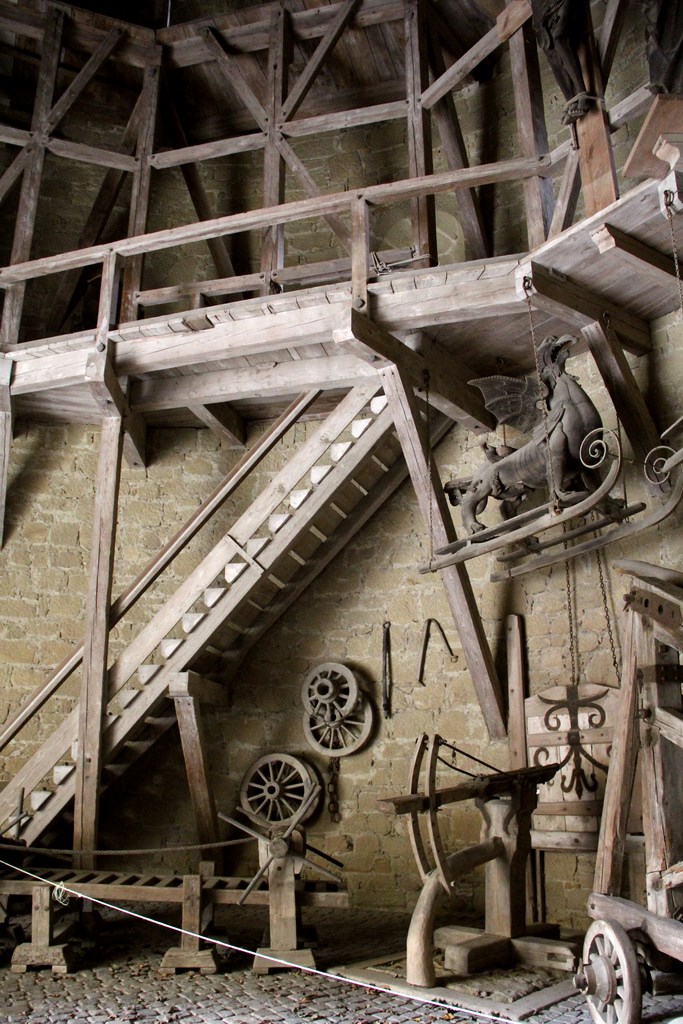
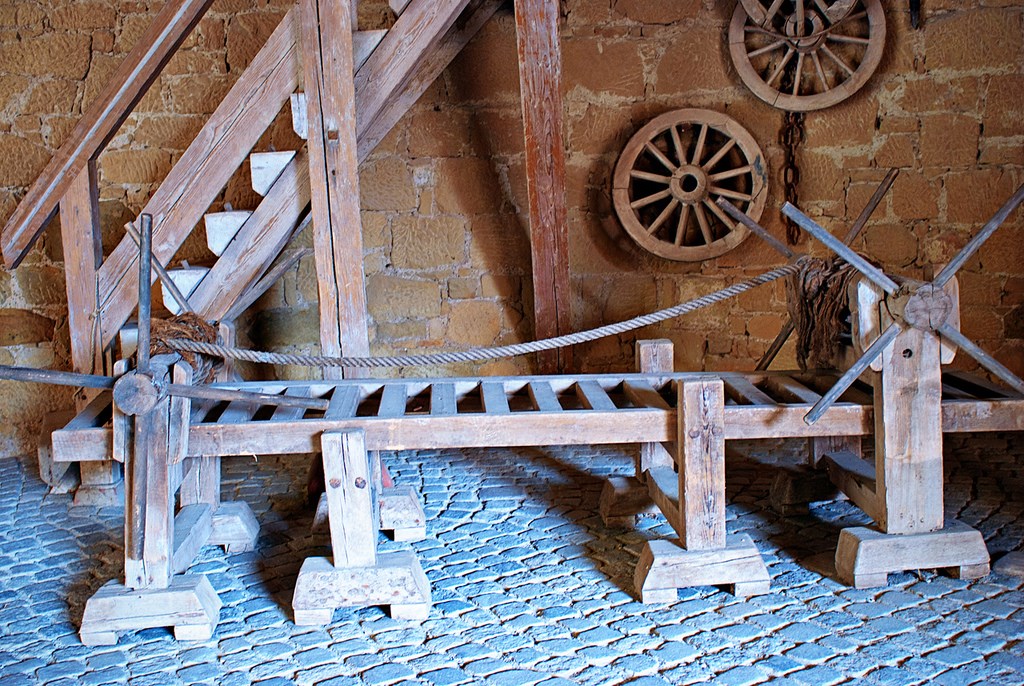
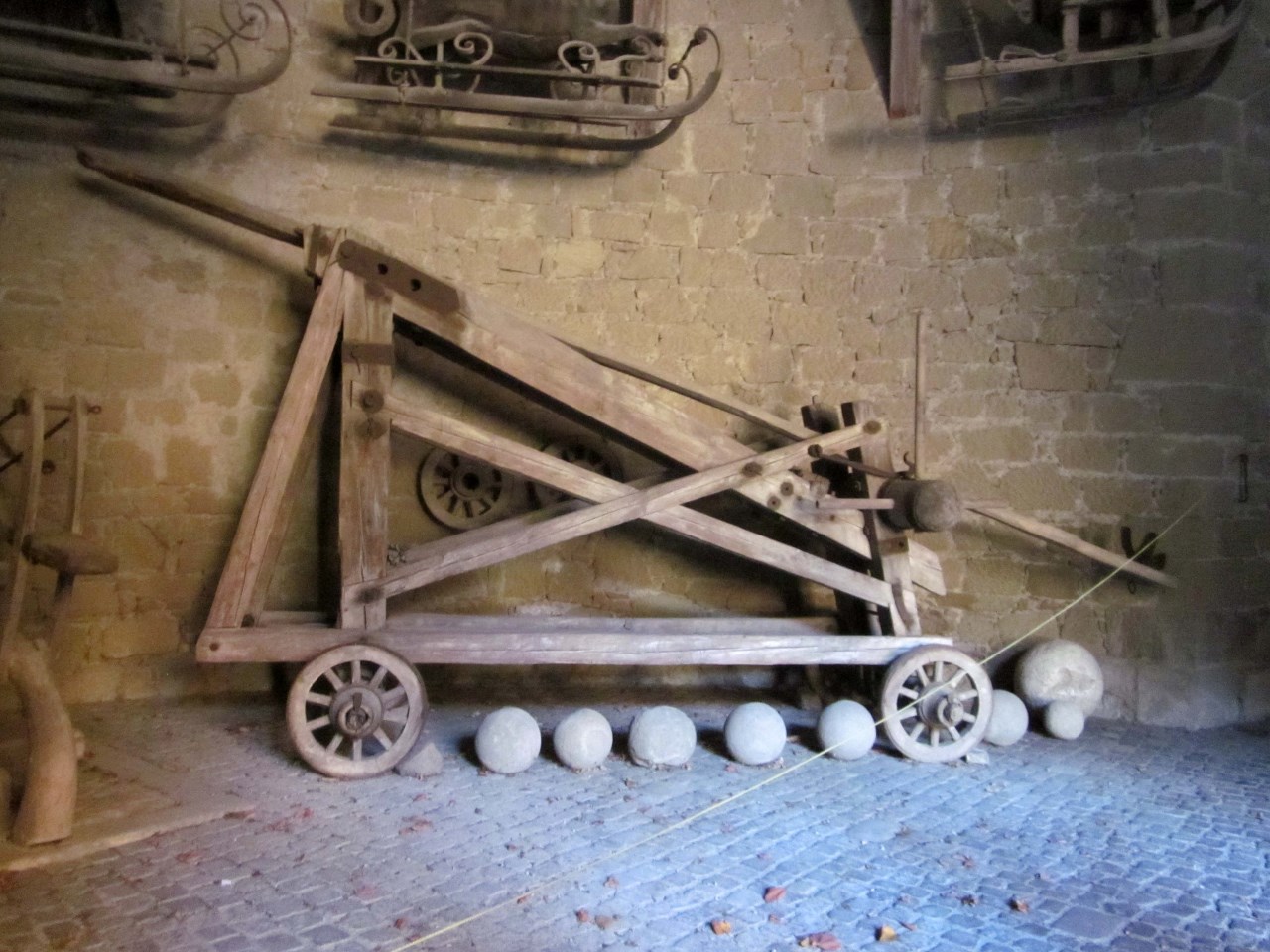
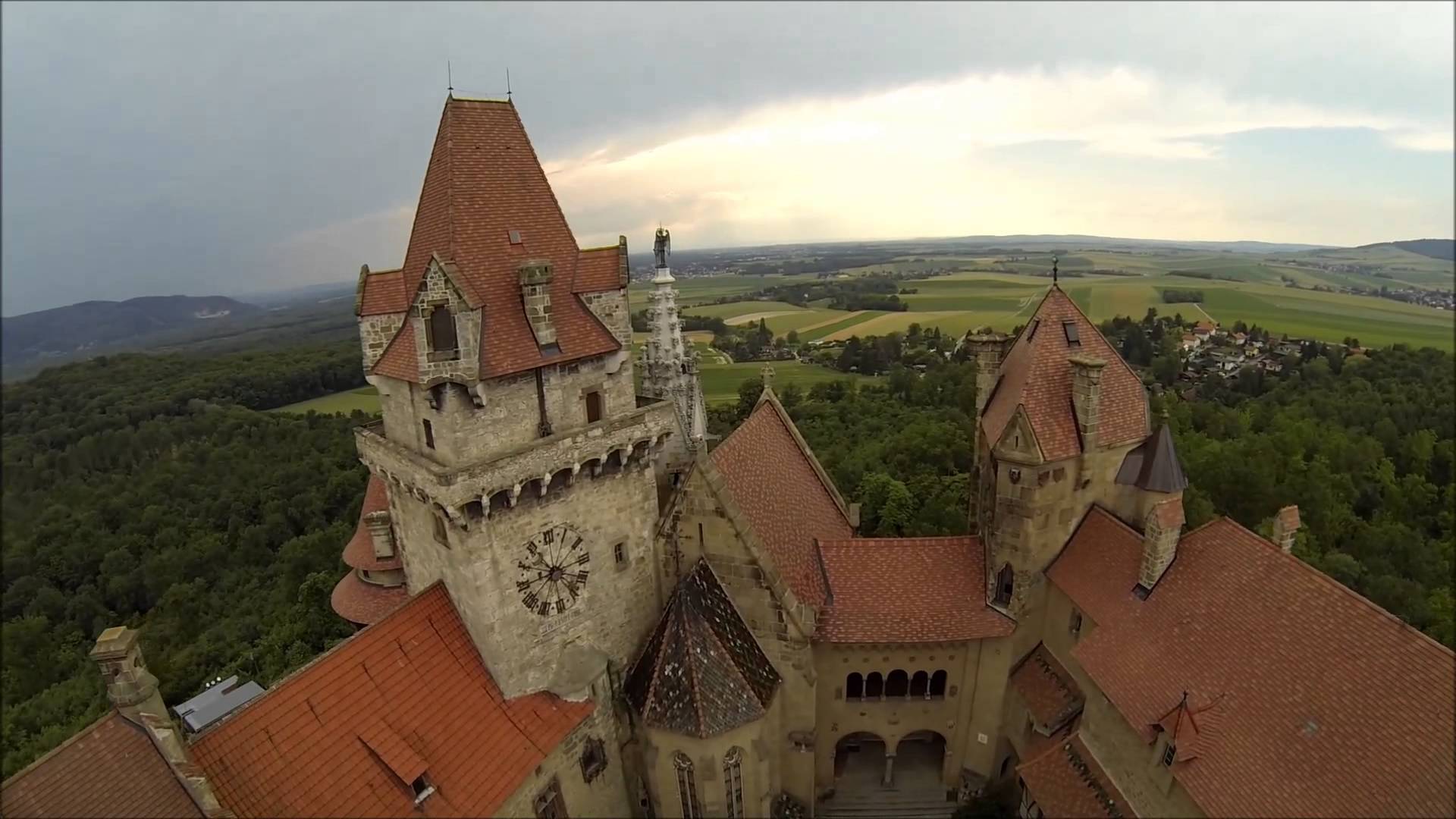
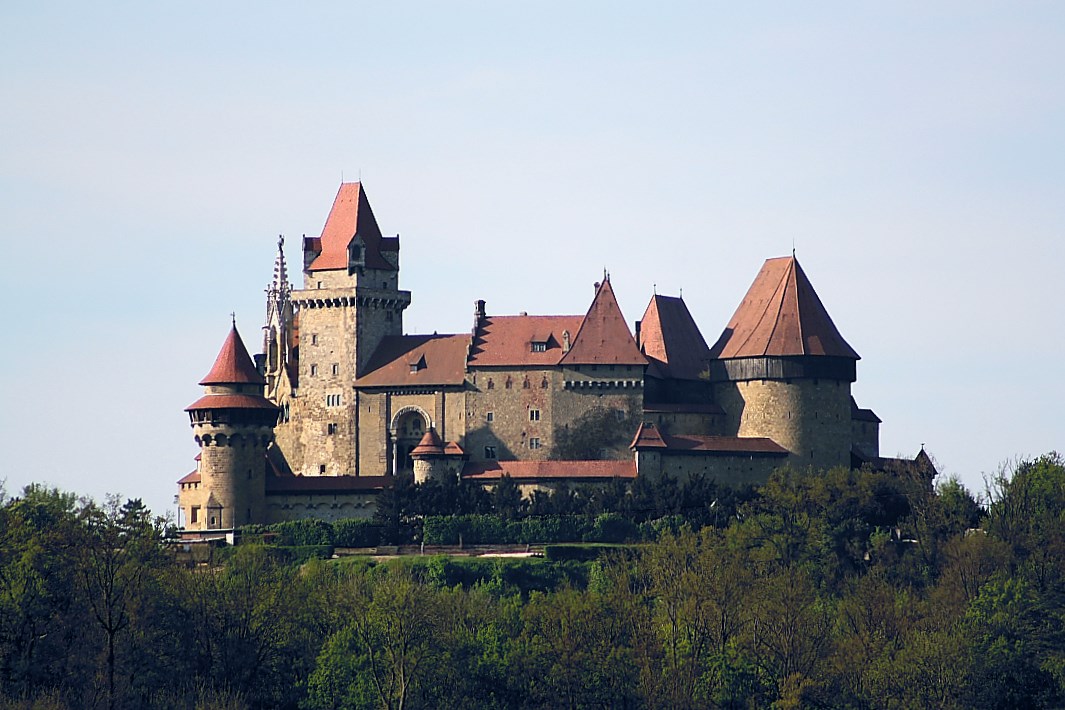
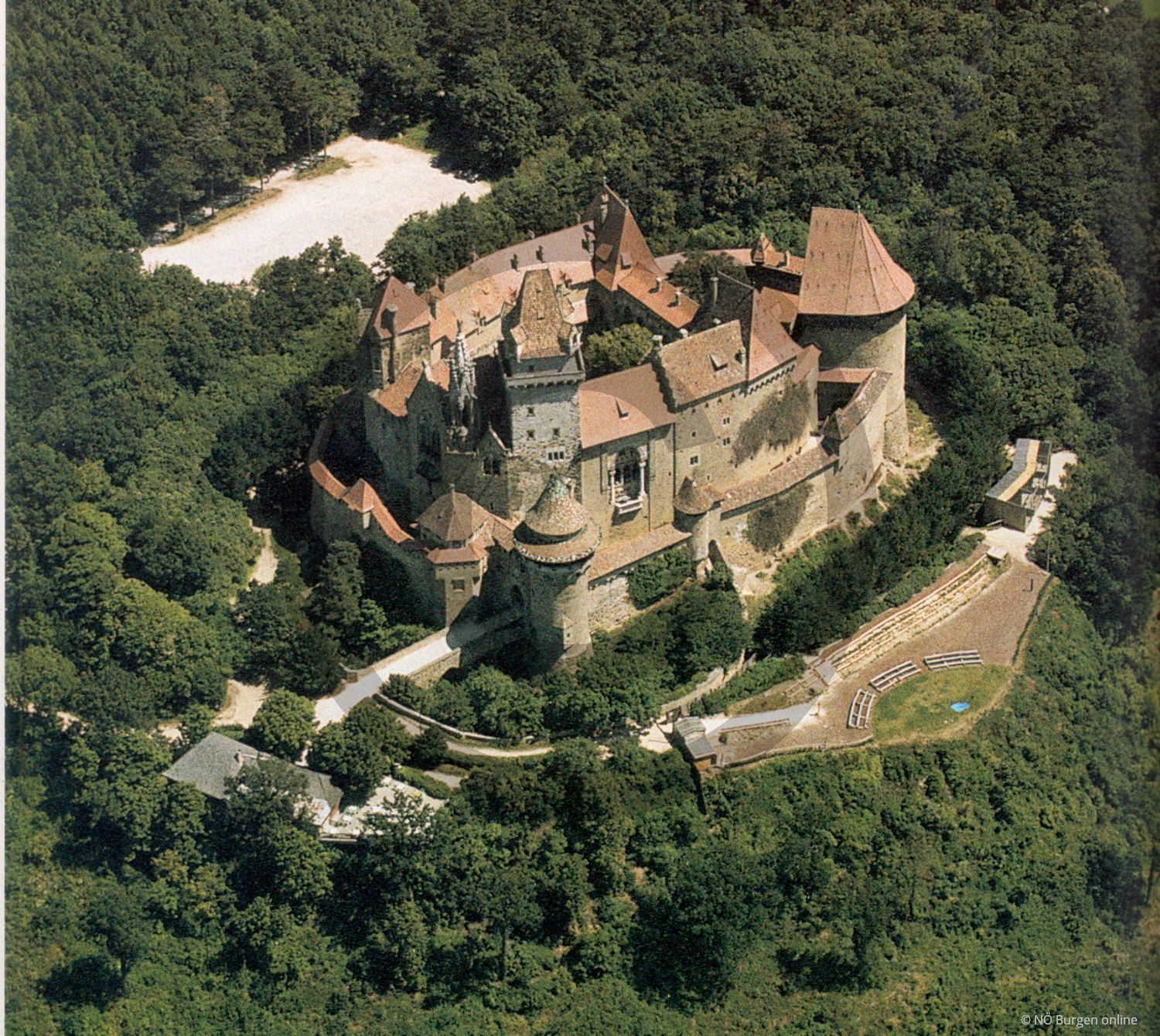
En la serie de Castillos de cuento: Burg Kreuzenstein (Austria)
Este recorrido por los castillos más bonitos de Europa no para. Conocimos los que existen en Eslovaquia, Alemania, Francia, España. En este post, nos trasladamos a Austria para seguir con esta serie les muestro Burg Kreuzenstein, que bien puede hacernos creer en Raspunsel, la princesa Fiona y demás protagonistas de cuentos.
Se encuentra en Leobendorf, en la Baja Austria. Fue construido en el siglo XIX por la familia Wilczek sobre un terreno donde quedaban ruinas de un fuerte. Para rearmarlo fueron comprando partes de otros de estos edificios medievales que trajeron desde distintos lugares de Europa. Concluir su restauración llevó 33 años y se fueron usando elementos antiguos de estilos gótico y romano.
Burg Kreuzenstein está encima de una colina y al ingresar te encontrarás con la historia del último de los caballeros, el Emperador Maximiliano I. Wilczek quería que el castillo fuera el lugar donde se conservara su colección de objetos del Gótico tardía y sus armaduras, incluyendo el Gabinete Brixner que data del siglo XV de Salzburgo.
Puedes visitar el Castillo y el Museo todos los días en el horario de 10 a 4 PM entre los meses de abril a octubre. Los adultos deben abonar 10 euros y los niños, cinco. Cada hora se realiza una visita guiada.
Entrando en Burg Kreuzenstein estarás entrando en otro tiempo a la que uno se va dejando llevar al pasear por las habitaciones ornamentadas, el hall para los festivales y banquetes, la biblioteca. En la capilla, que tiene un impresionante vitreaux, se realizan casamientos –¿se imaginan lugar más romántico que este?-.
Otro dato interesante es que en las cercanías del Castillo un grupo de aficionados a los halcones (y otras aves de presa) tienen a sus aves adiestradas. De manera que no te sorprendas si las ves sobrevolando Burg Kreuzenstein y regresar al brazo de sus entrenadores. Esta es una costumbre que se realiza aquí desde hace más de 4.000 años.
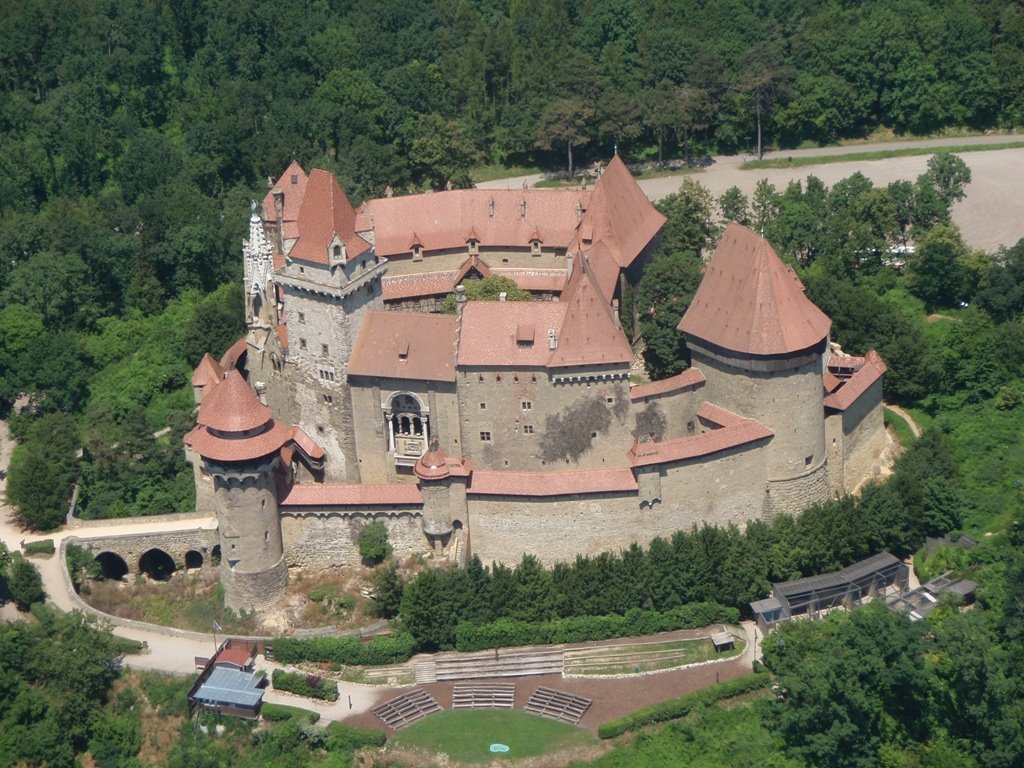
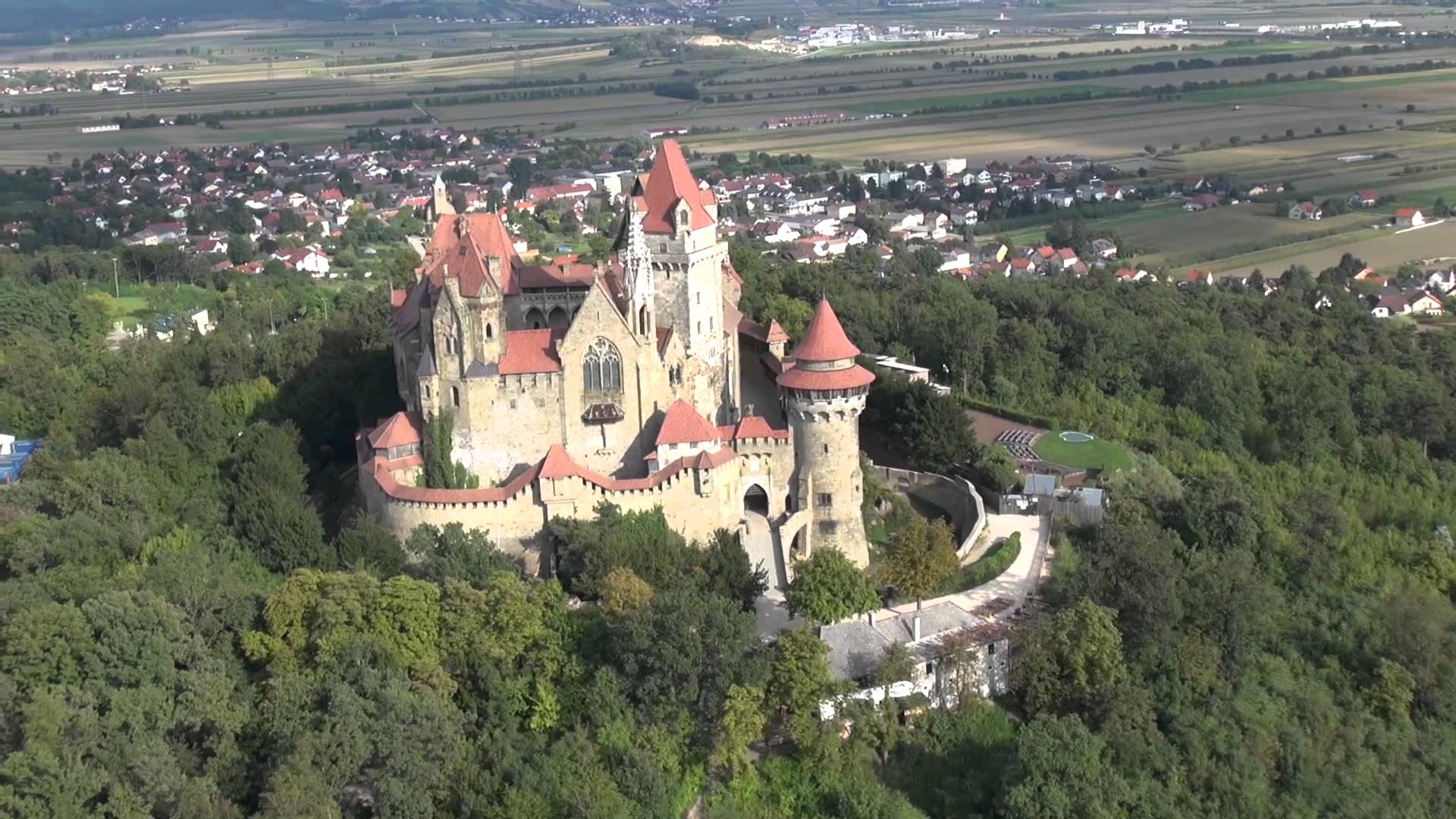
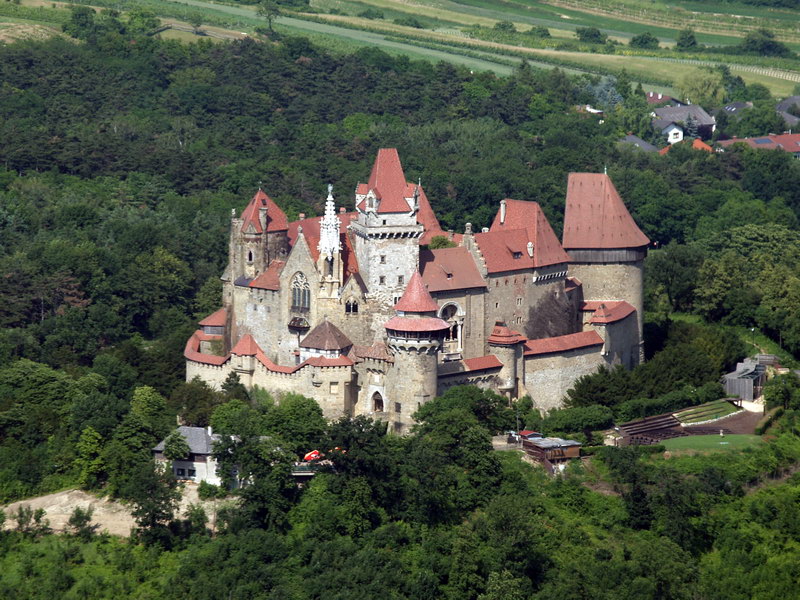

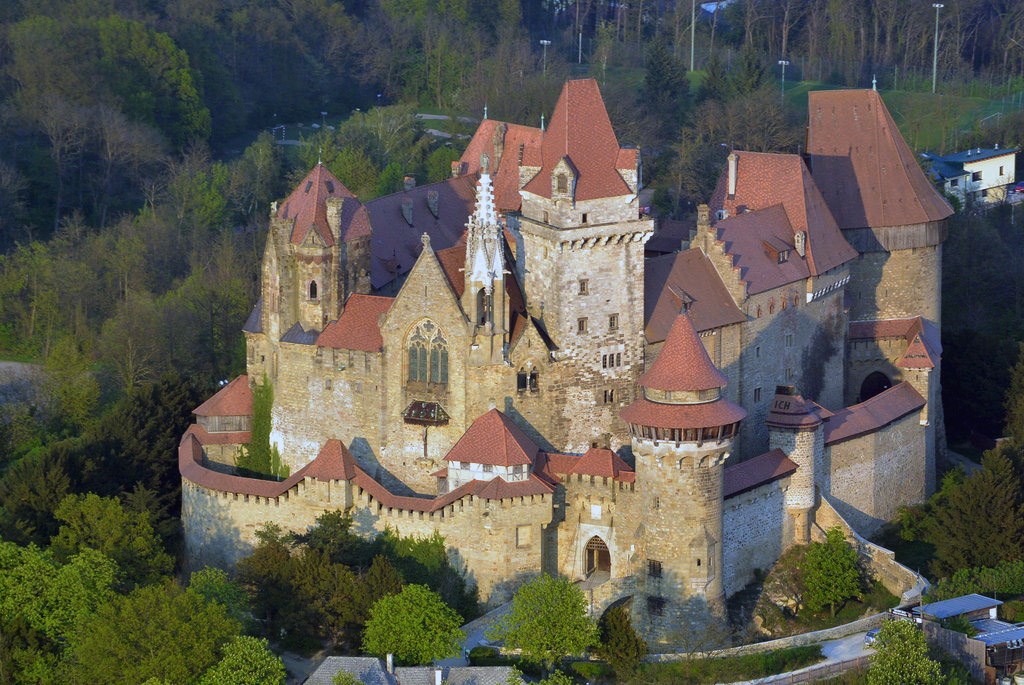

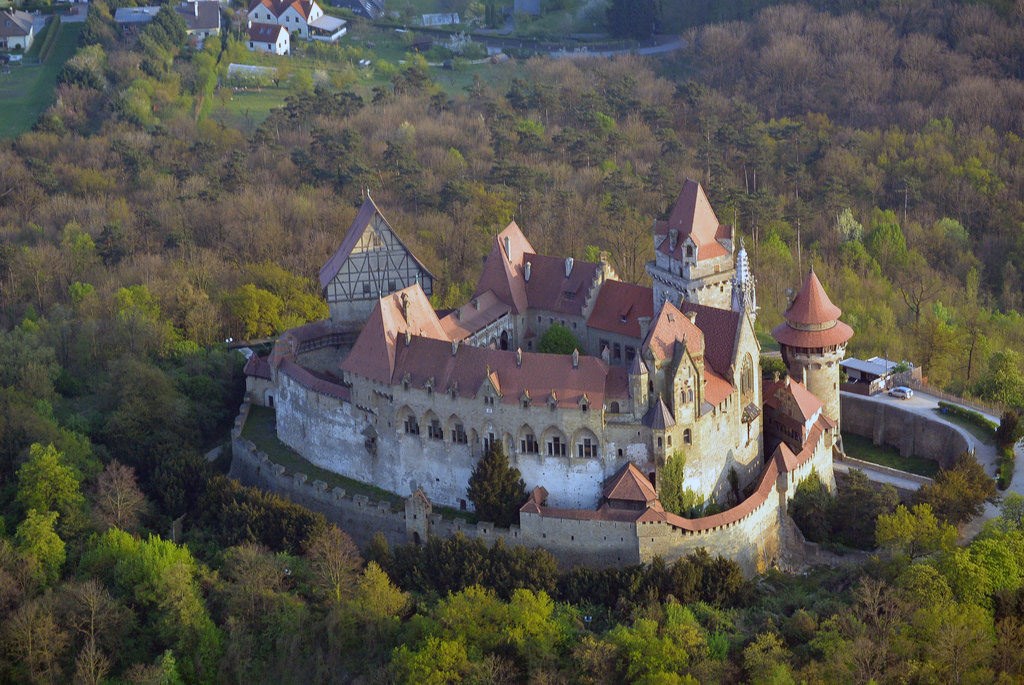
Burg Kreuzenstein is a castle near Leobendorf in Lower Austria, Austria. Burg Kreuzenstein is situated at an altitude of 265 meters.[1] It was constructed on the remains of an early medieval castle that had fallen into disrepair and was then demolished during the Thirty Years' War. Intended to be a family vault for the Wilczek family, it was rebuilt in the 19th century by Count Nepomuk Wilczek with money from the family's large Silesian coal mines. Kreuzenstein is interesting in that it was constructed out of sections of medieval structures purchased by the family from all over Europe to form an authentic-looking castle. Thus, the castle can be considered both a 'neo-' and 'original' medieval structure. The castle is sometimes used as a location for films.
This castle is sometimes confused with the medieval castle Burg Liechtenstein, where the movie The Three Musketeers was filmed in 1993.
http://en.wikipedia.org/wiki/Burg_Kreuzenstein
http://de.wikipedia.org/wiki/Burg_Kreuzenstein
https://www.flickr.com/photos/flightlog/sets/72157643857669485
https://www.flickr.com/search/?w=78128495@N00&q=Burg Kreuzenstein
https://www.flickr.com/photos/101269238@N08/sets/72157636426185056
https://www.flickr.com/search/?w=125240160@N02&q=Burg Kreuzenstein
http://alexanderhuebner.deviantart.com/gallery/?offset=96
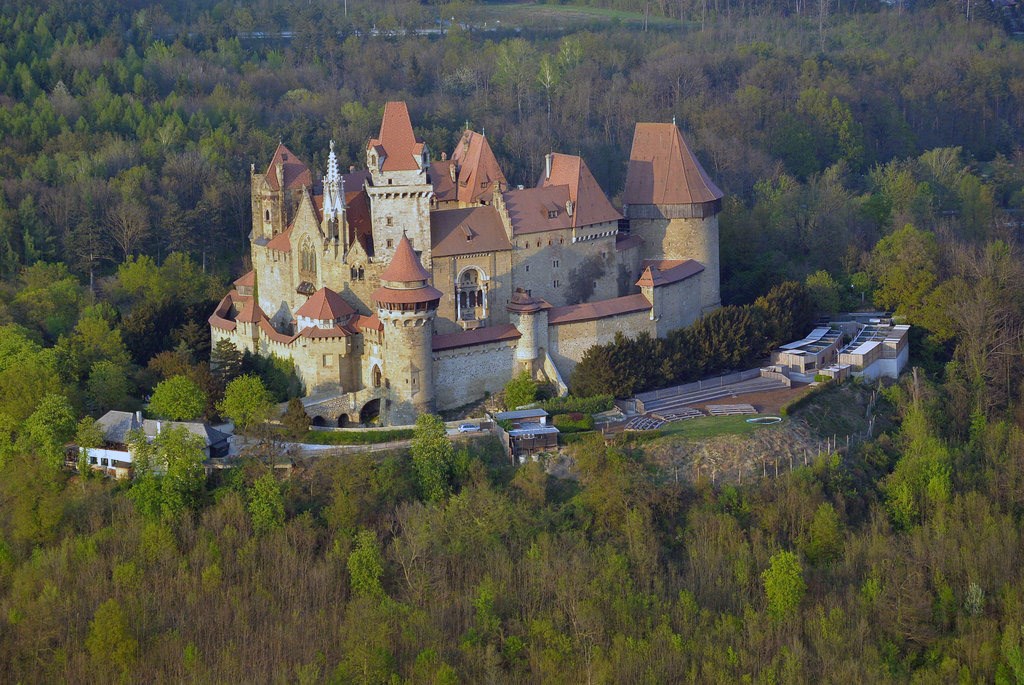
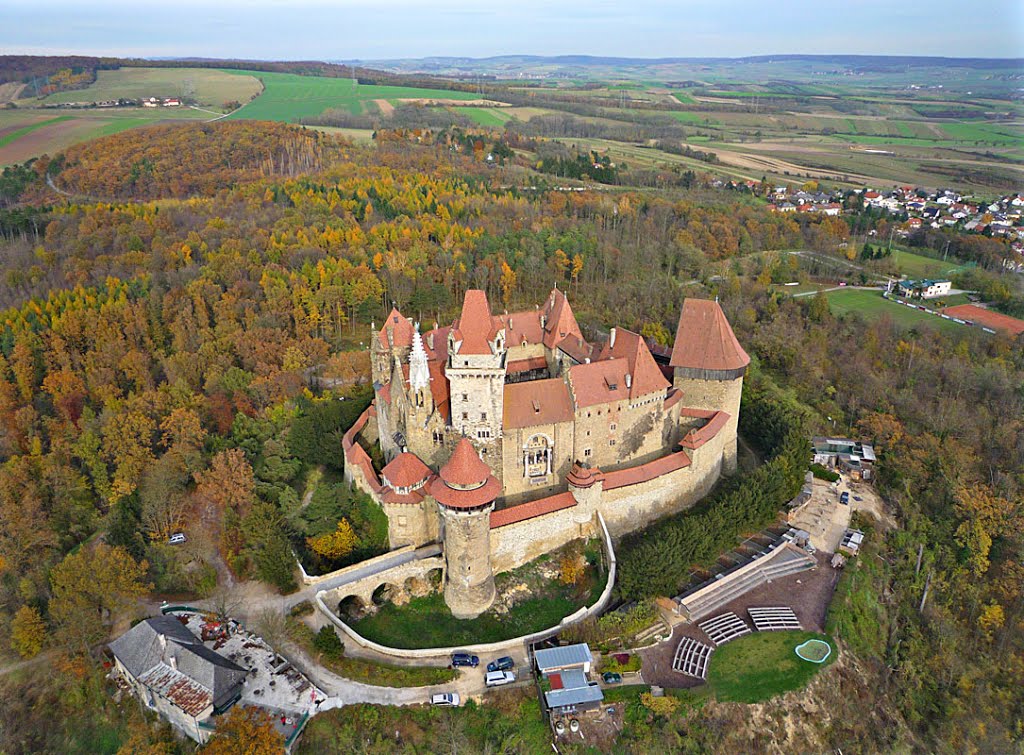
Vídeo:
Web recomendada: http://www.kreuzenstein.com/
Contador: 8195
Inserción: 2015-05-04 17:04:44
Lugares a visitar en un radio de 100 km (en línea recta)
Mapa de los lugares a 100 km (en línea recta)
Mostrando Registros desde el 1 hasta el 0 de un total de 0
Visitas |
Más visitados Basílica de San Marcos 154939 Catedral de Notre Dame (París) 144238 Torre de Pisa 131577 Monte Saint-Michel 100683 Presa de las Tres Gargantas 81536 |
Incorporaciones |
Comentarios hazola Cúpula de la Roca gracias me... gera Buenos Aires las mejores fotos de la mejor ciudad del... Daniel M. - BRASIL San Francisco ... PEQUE Presa Chicoasén SERA QUE ALGUIEN ME PUEDE DAR MAS INFORMACIÓN DE ESTE PROYECTO ESTUDIO EN LA UNACH Y ES PARA UN... Mery Huaca Pucllana Muy interesante, muy buena la información y... |
 Tweet
Tweet


